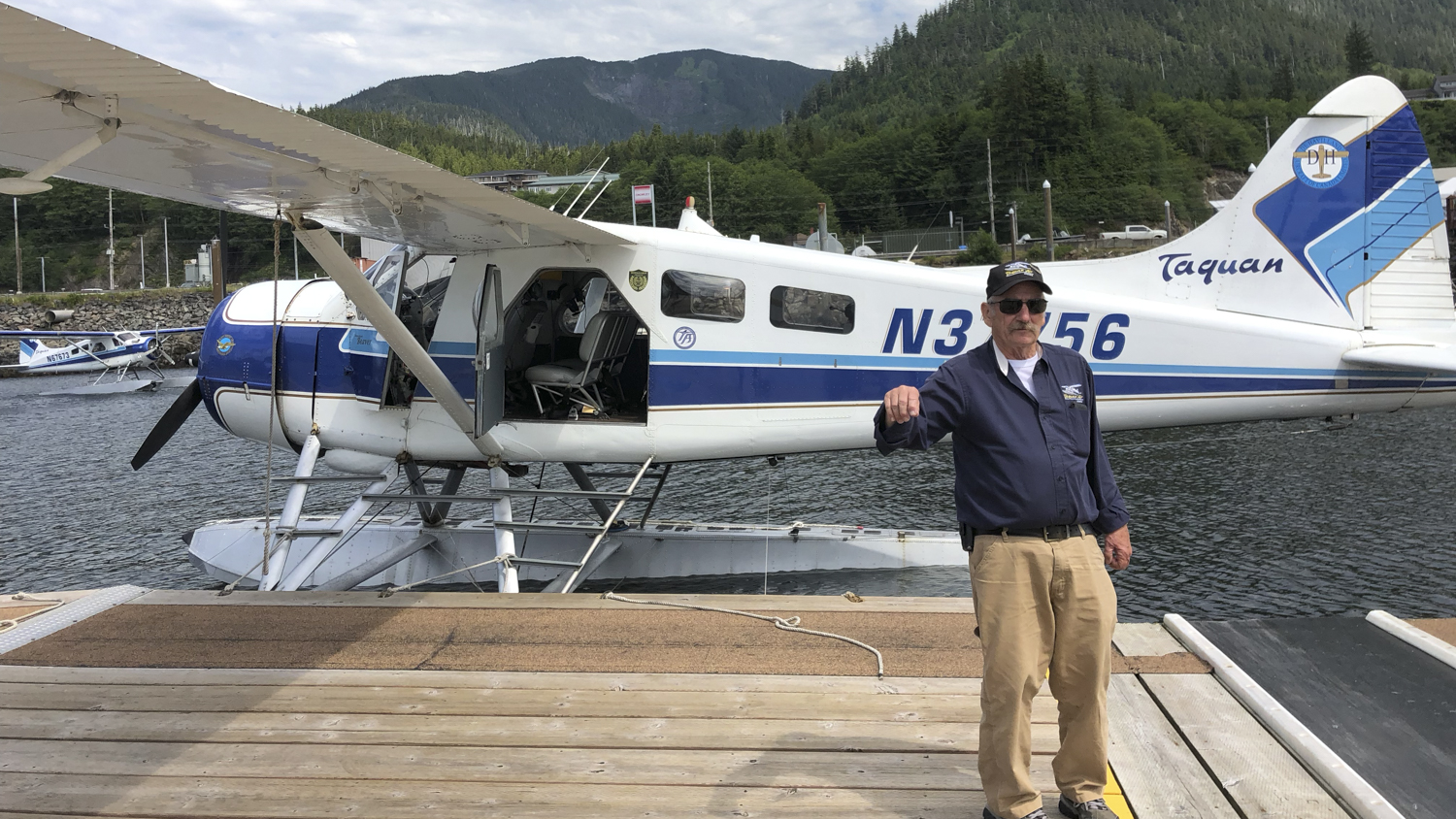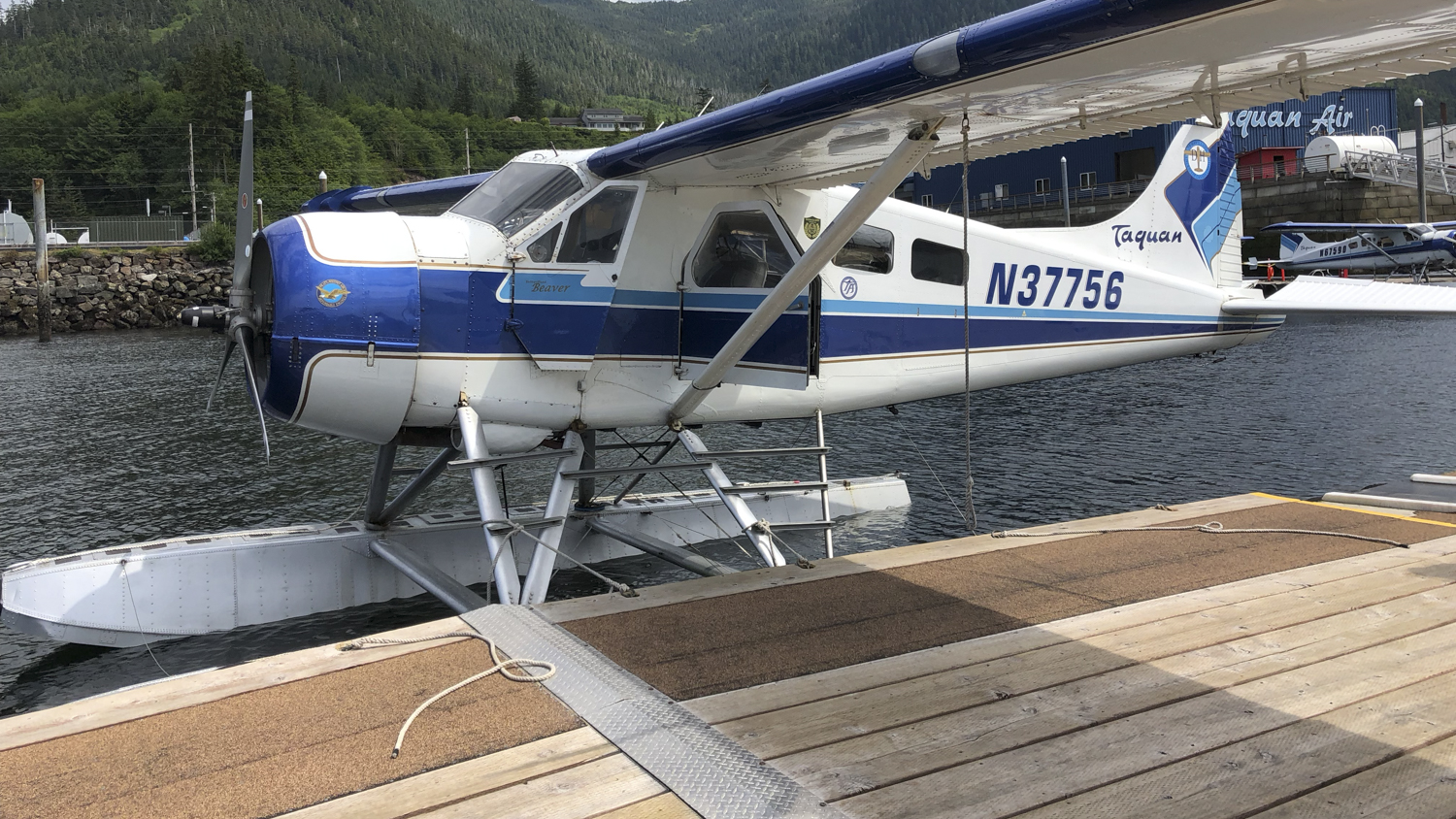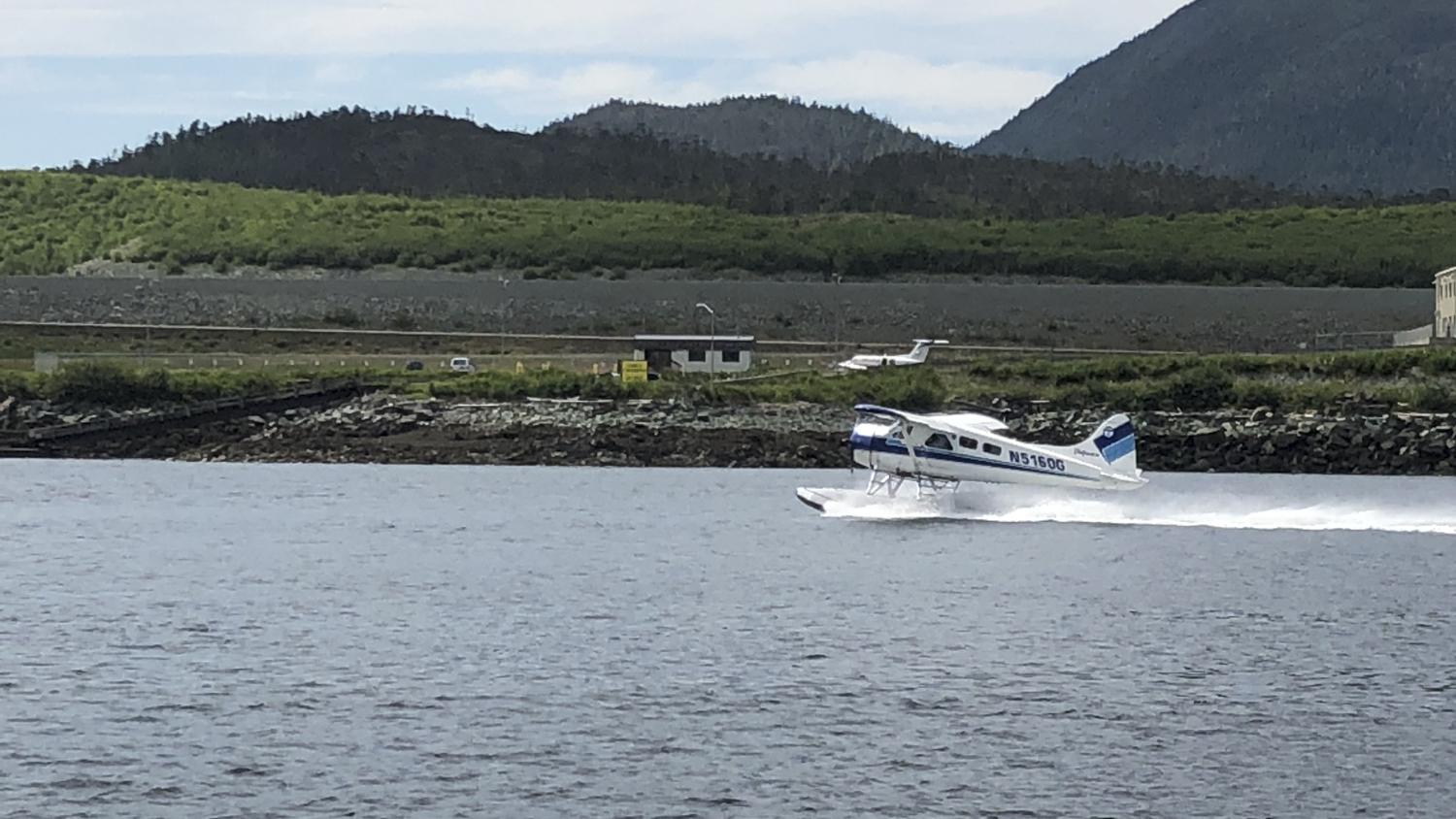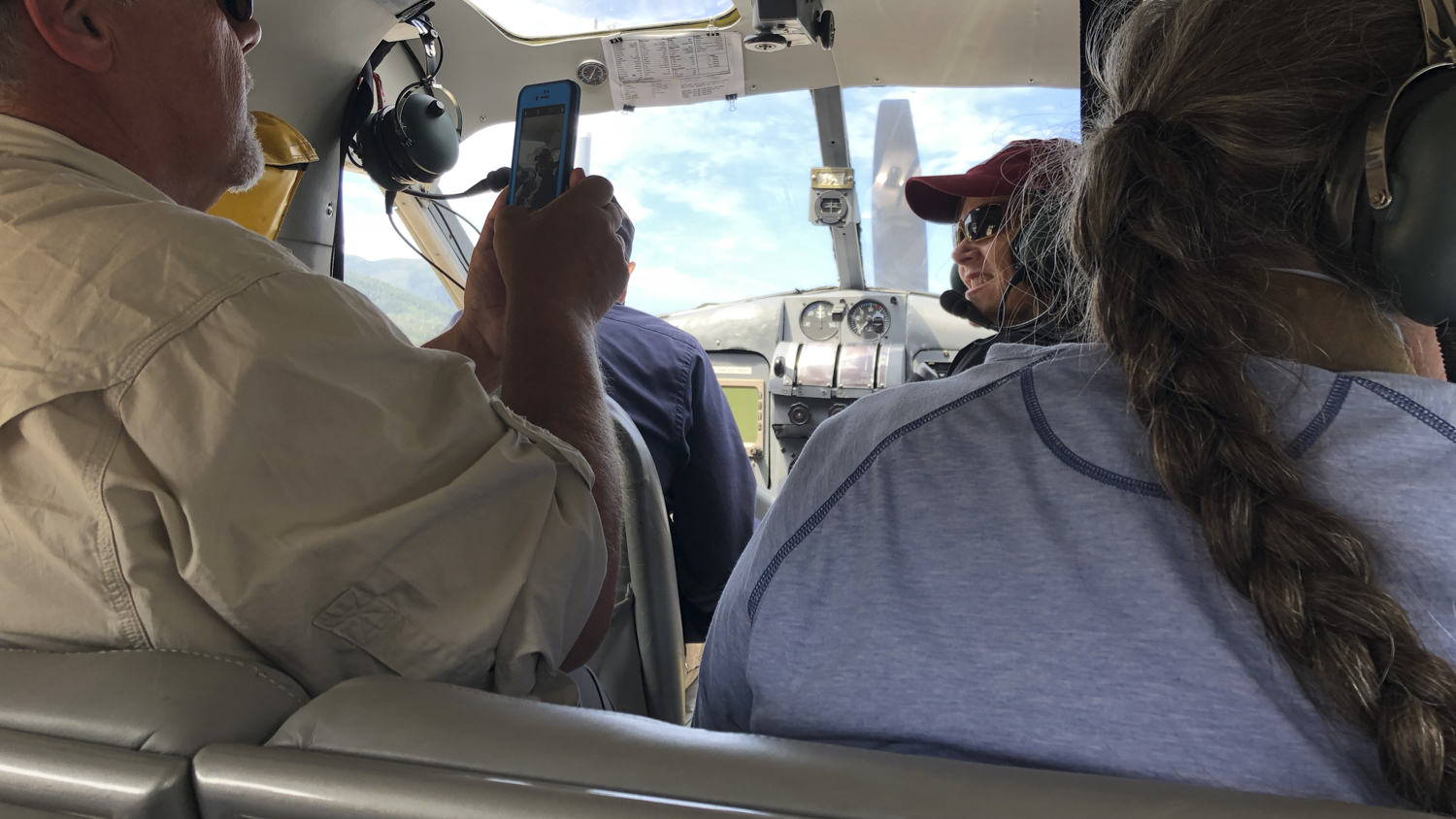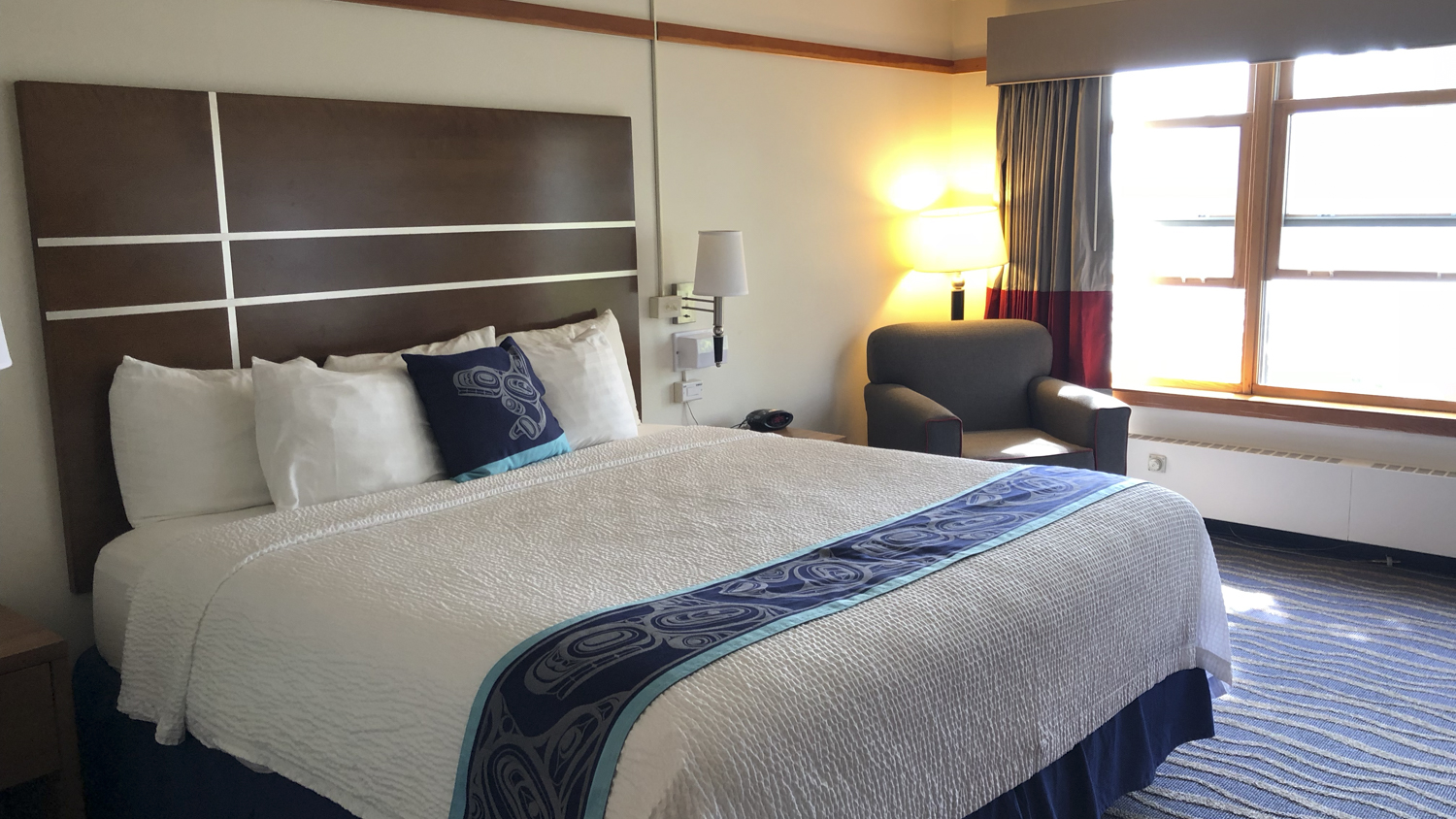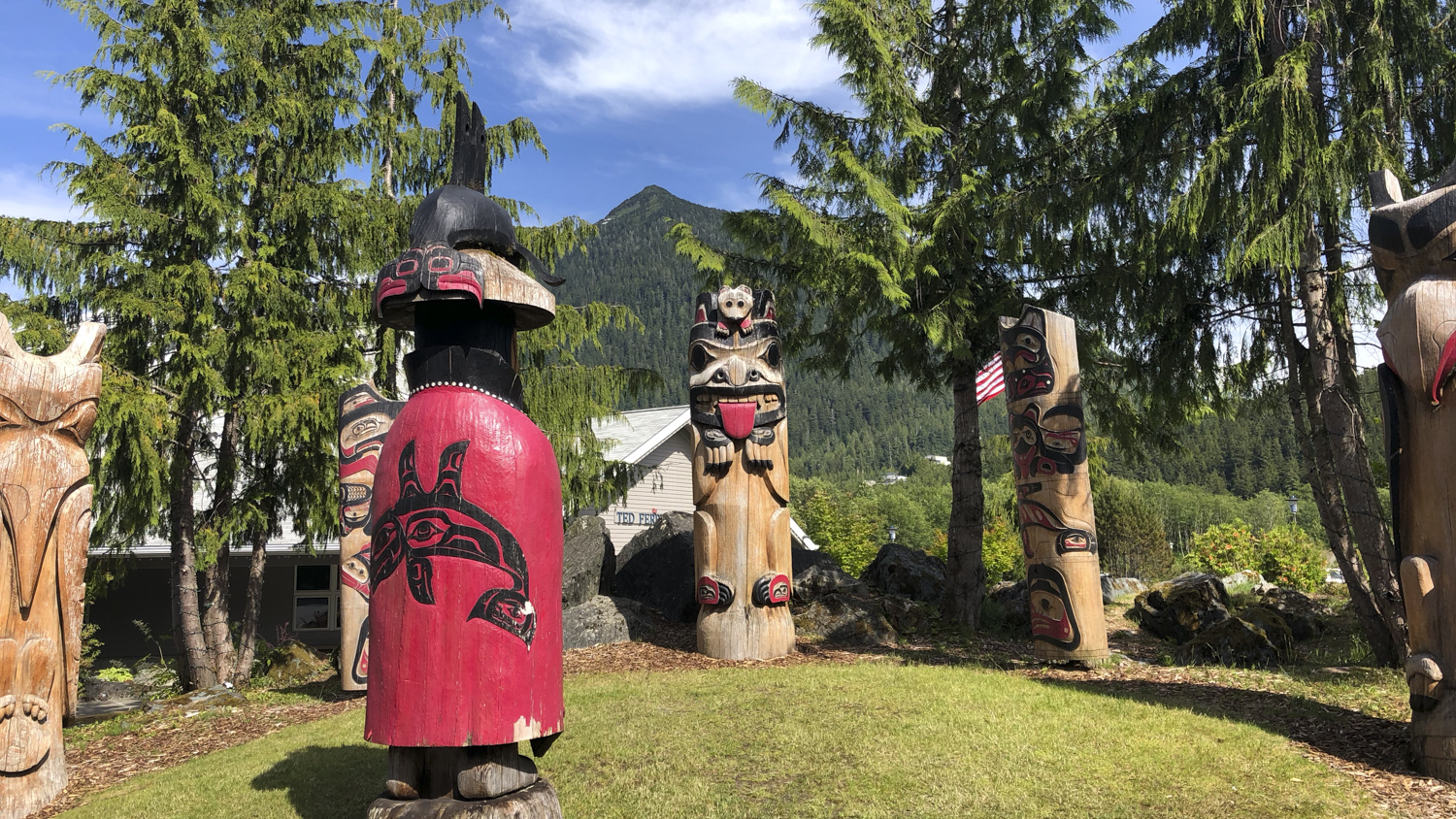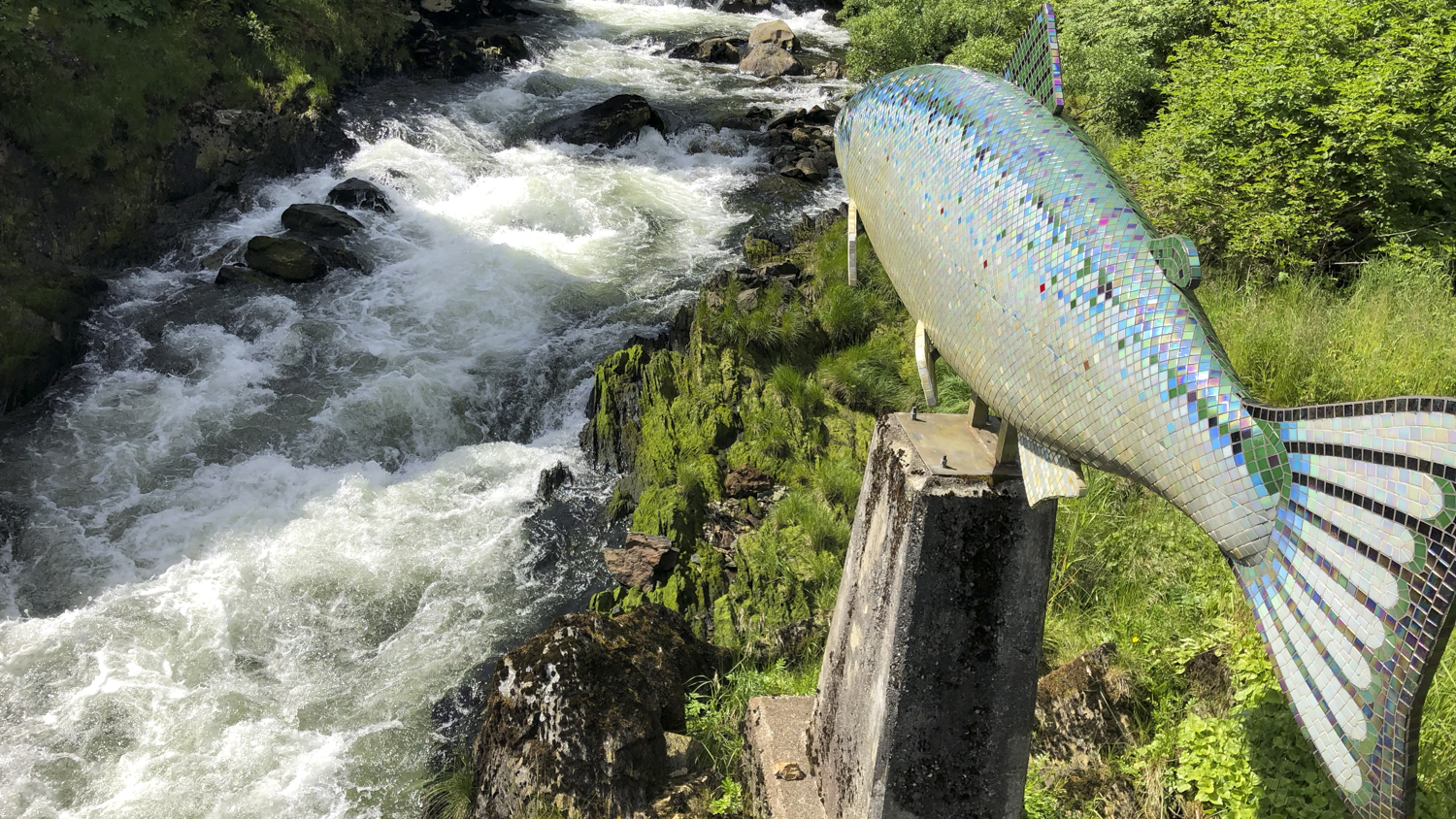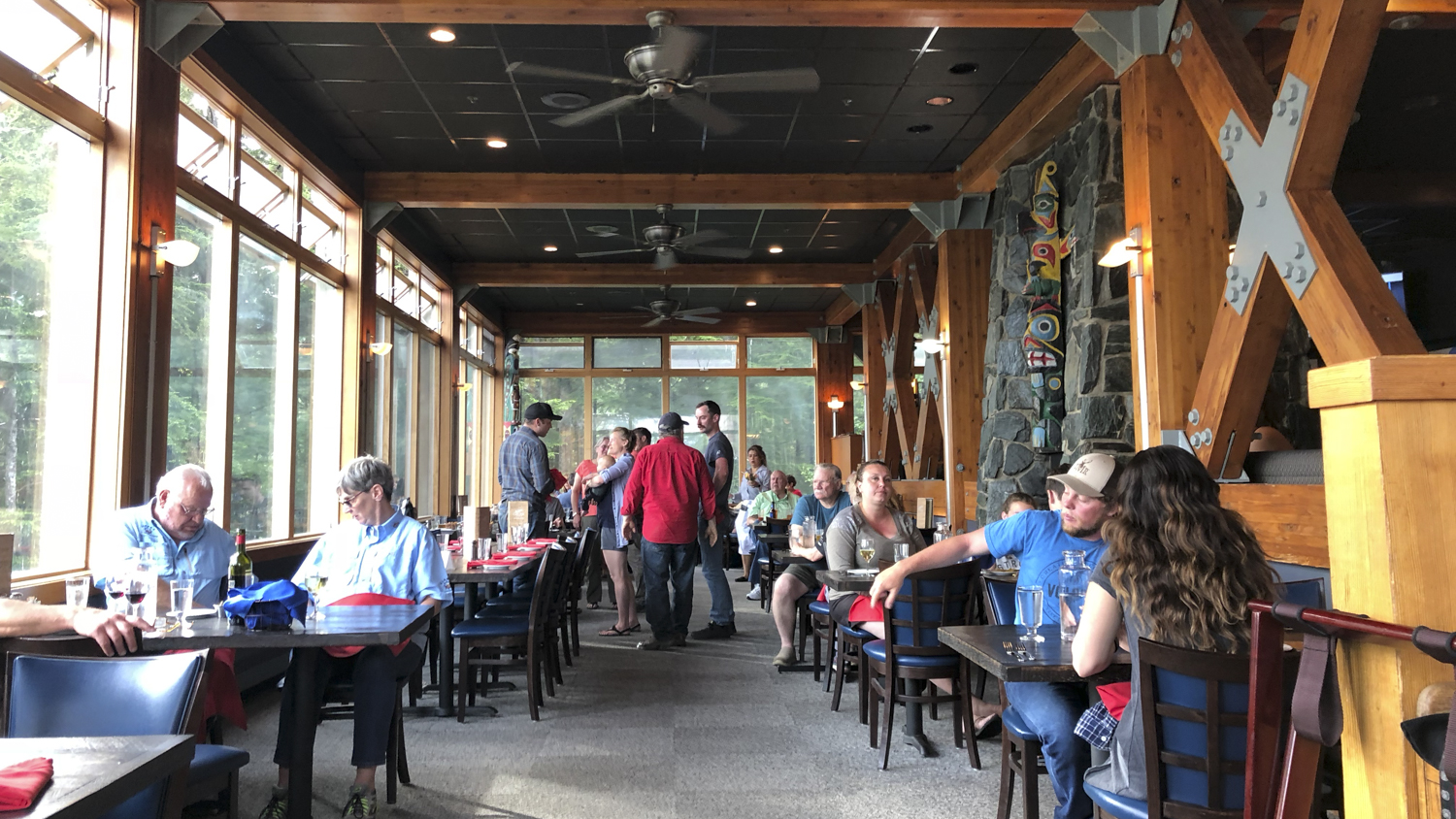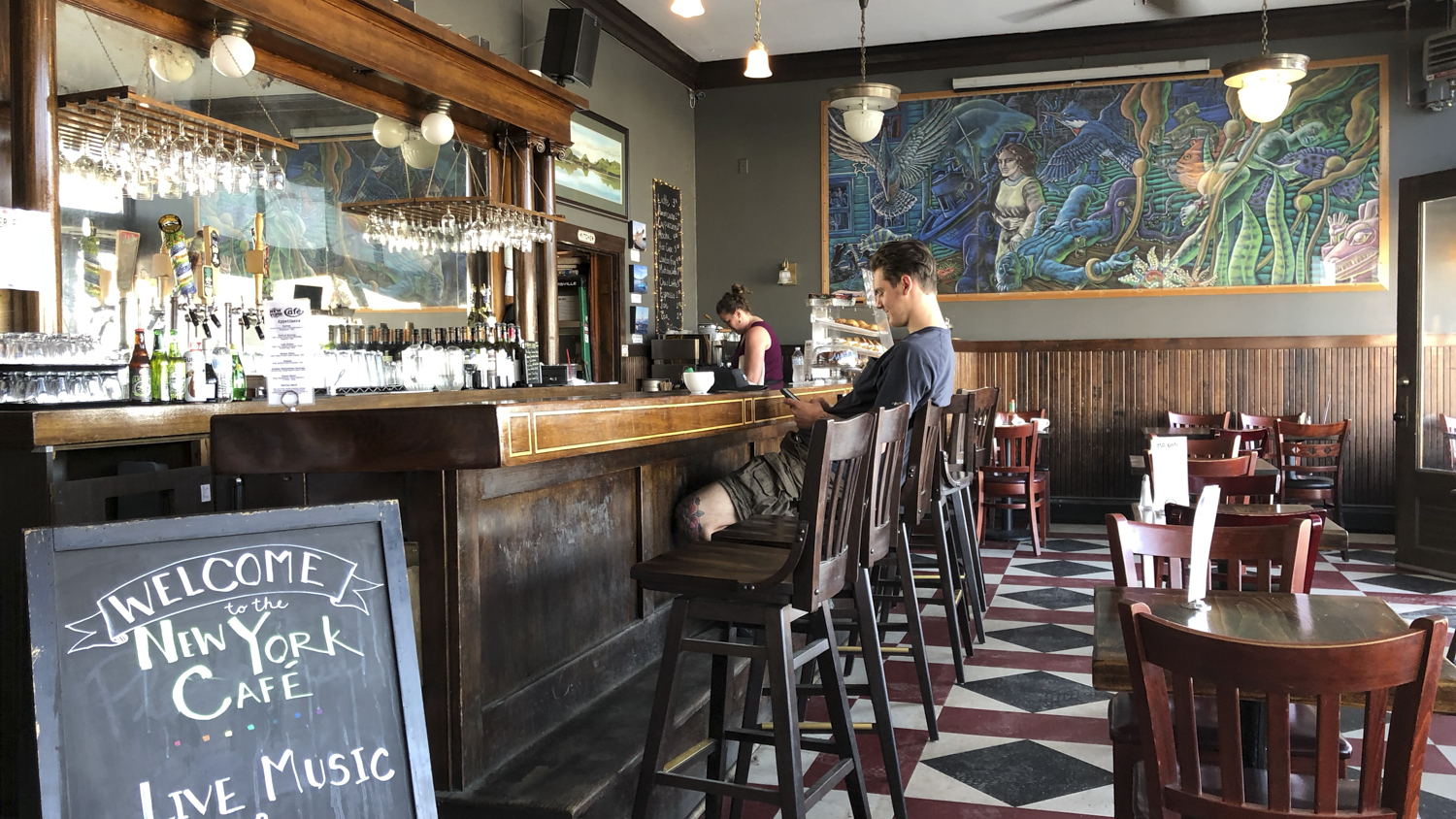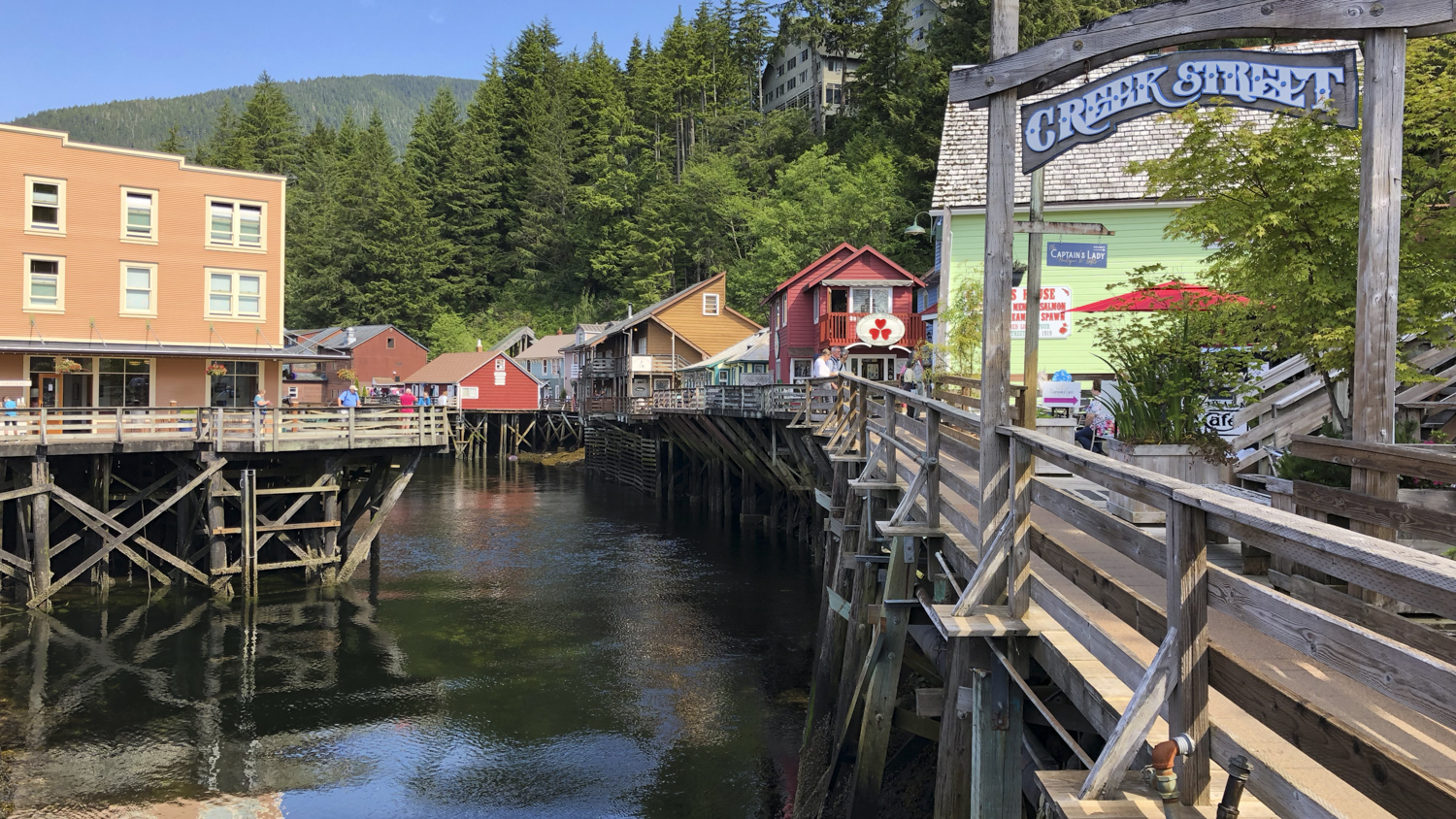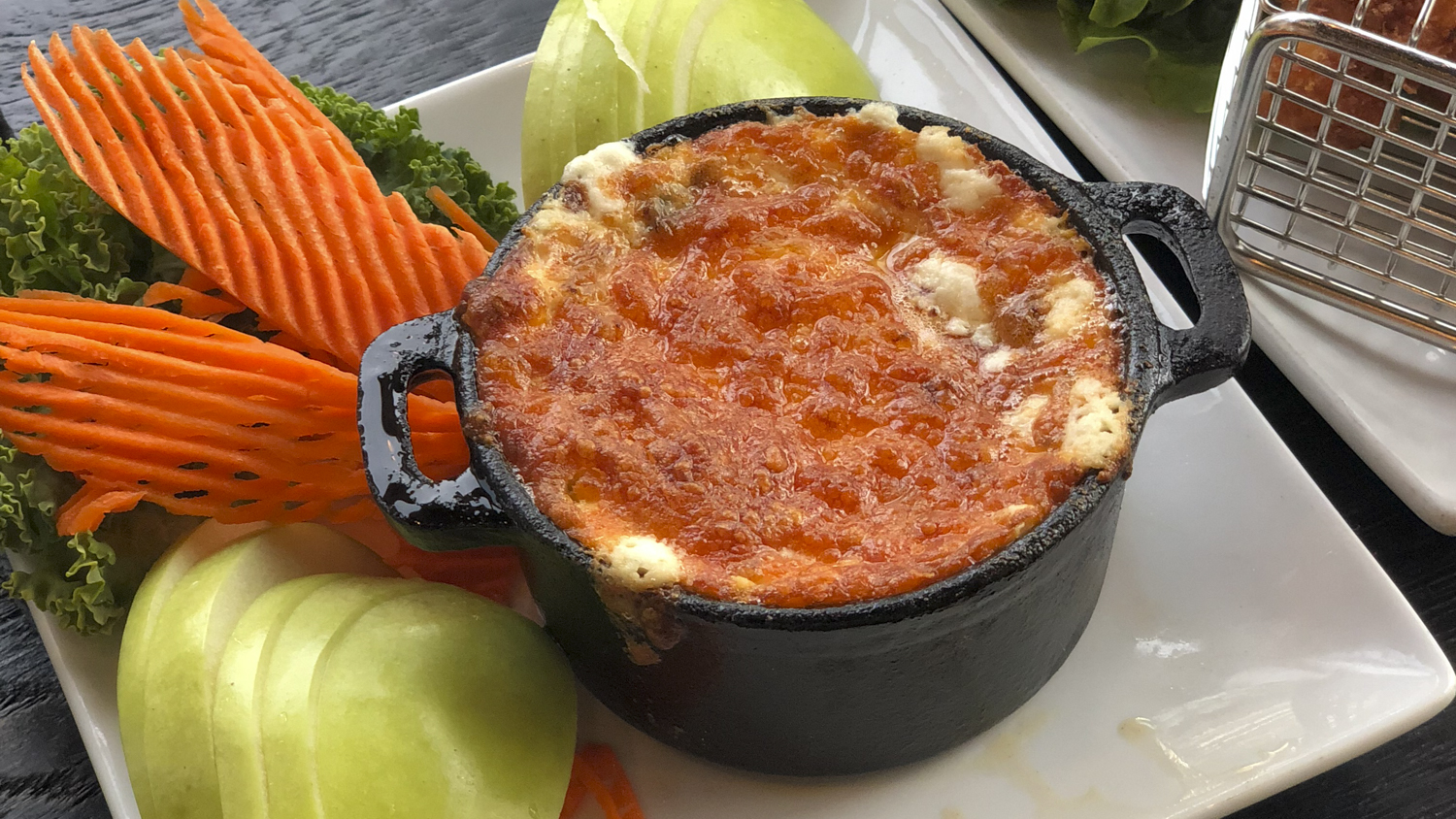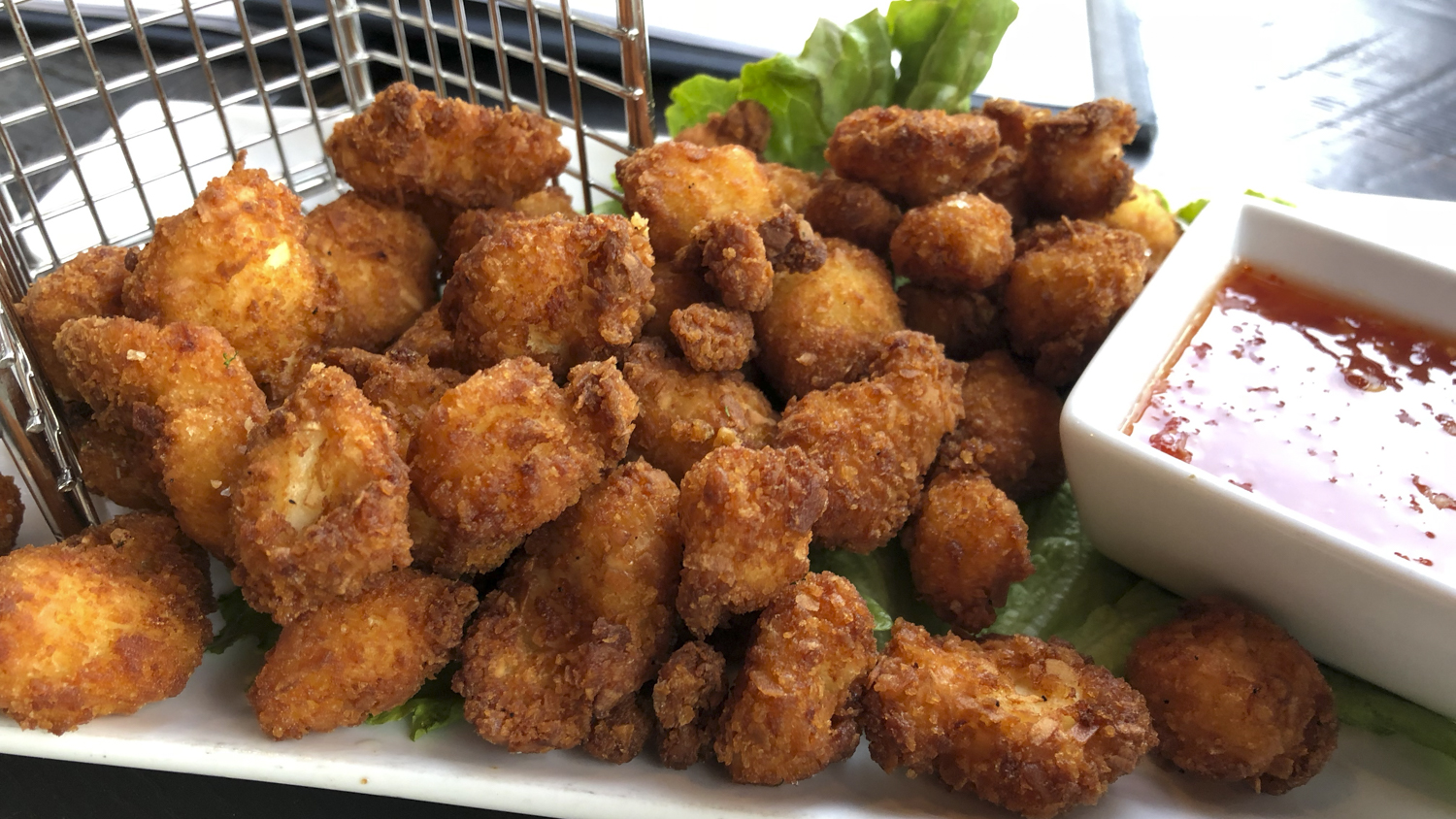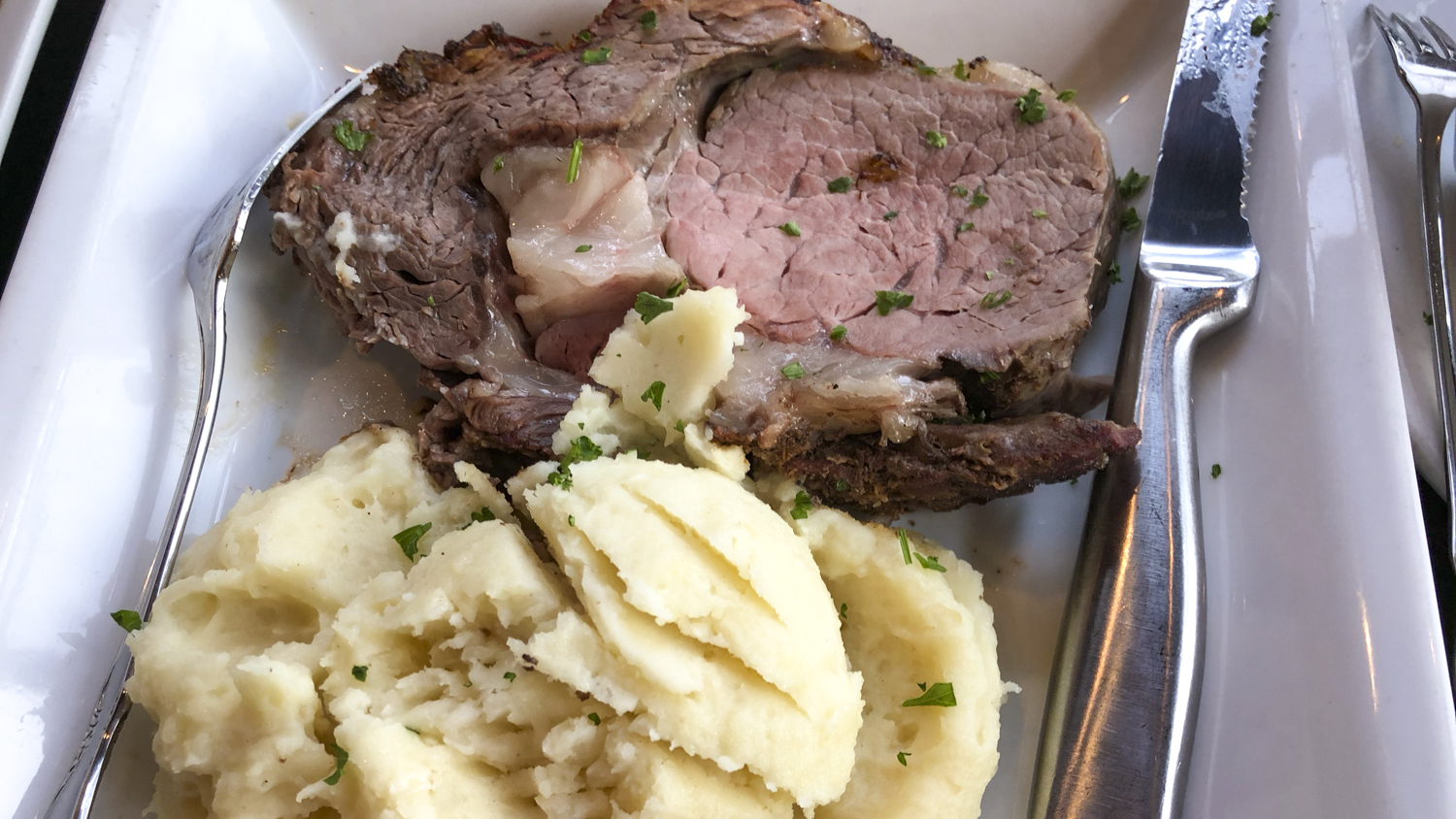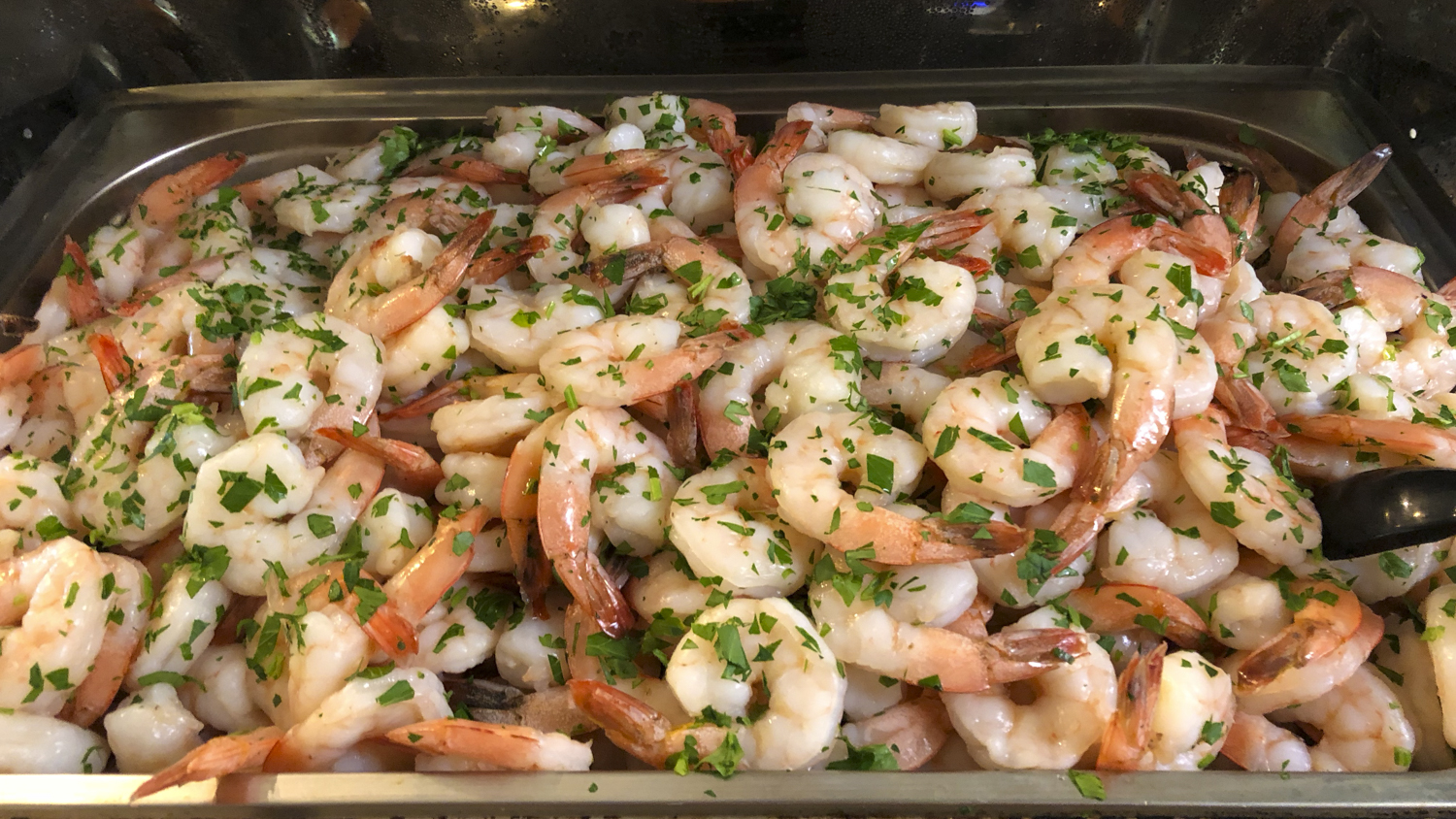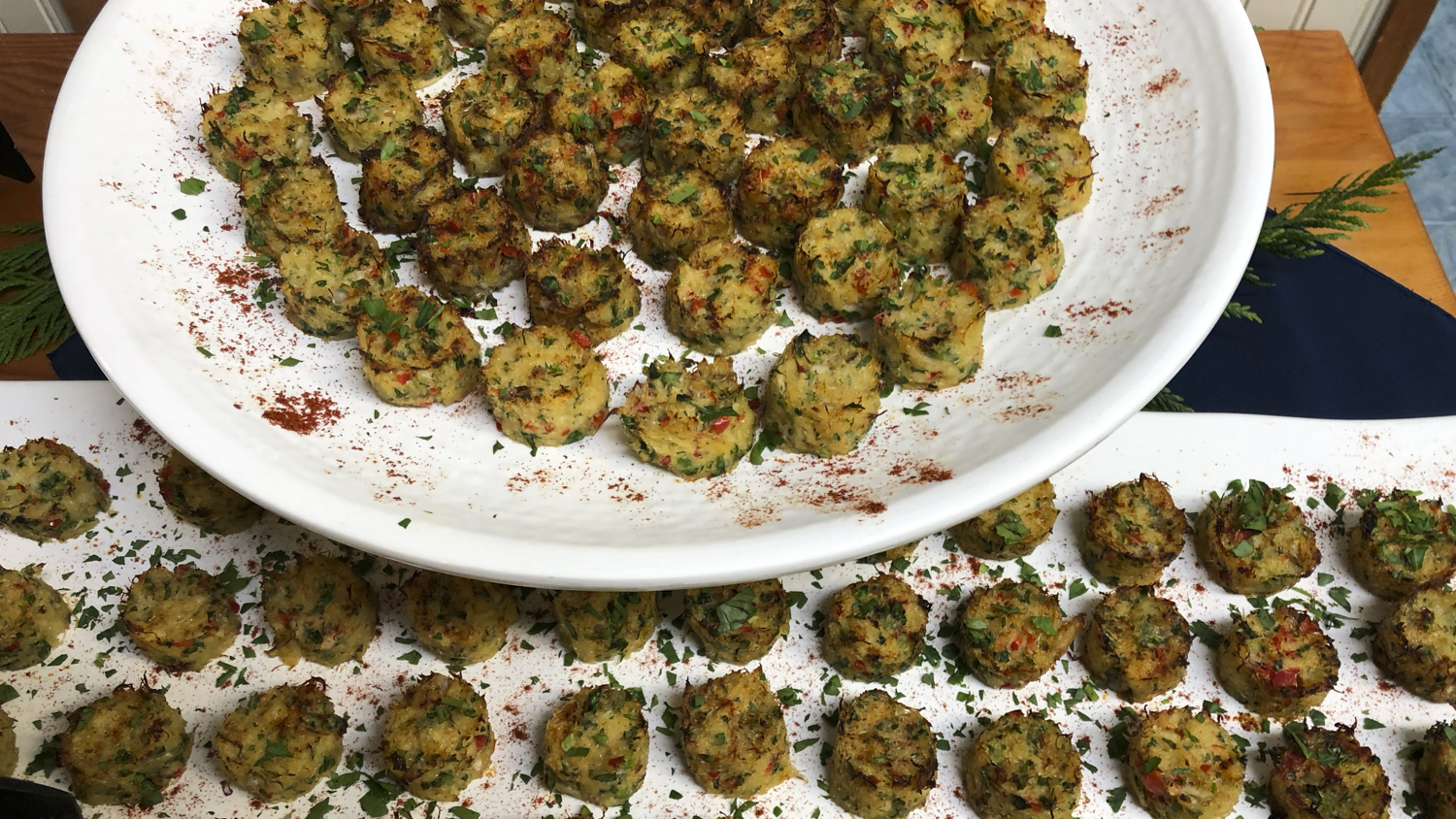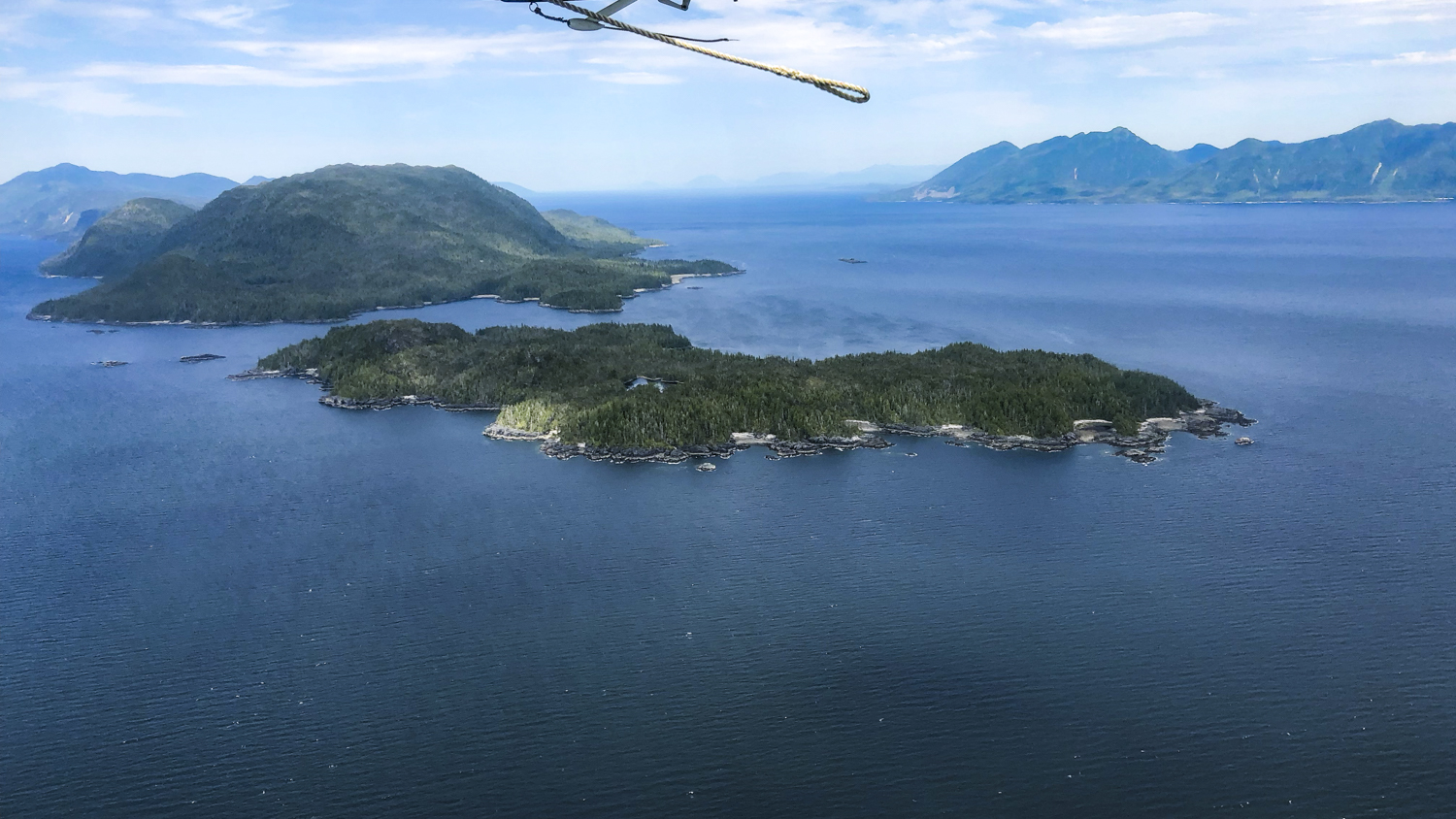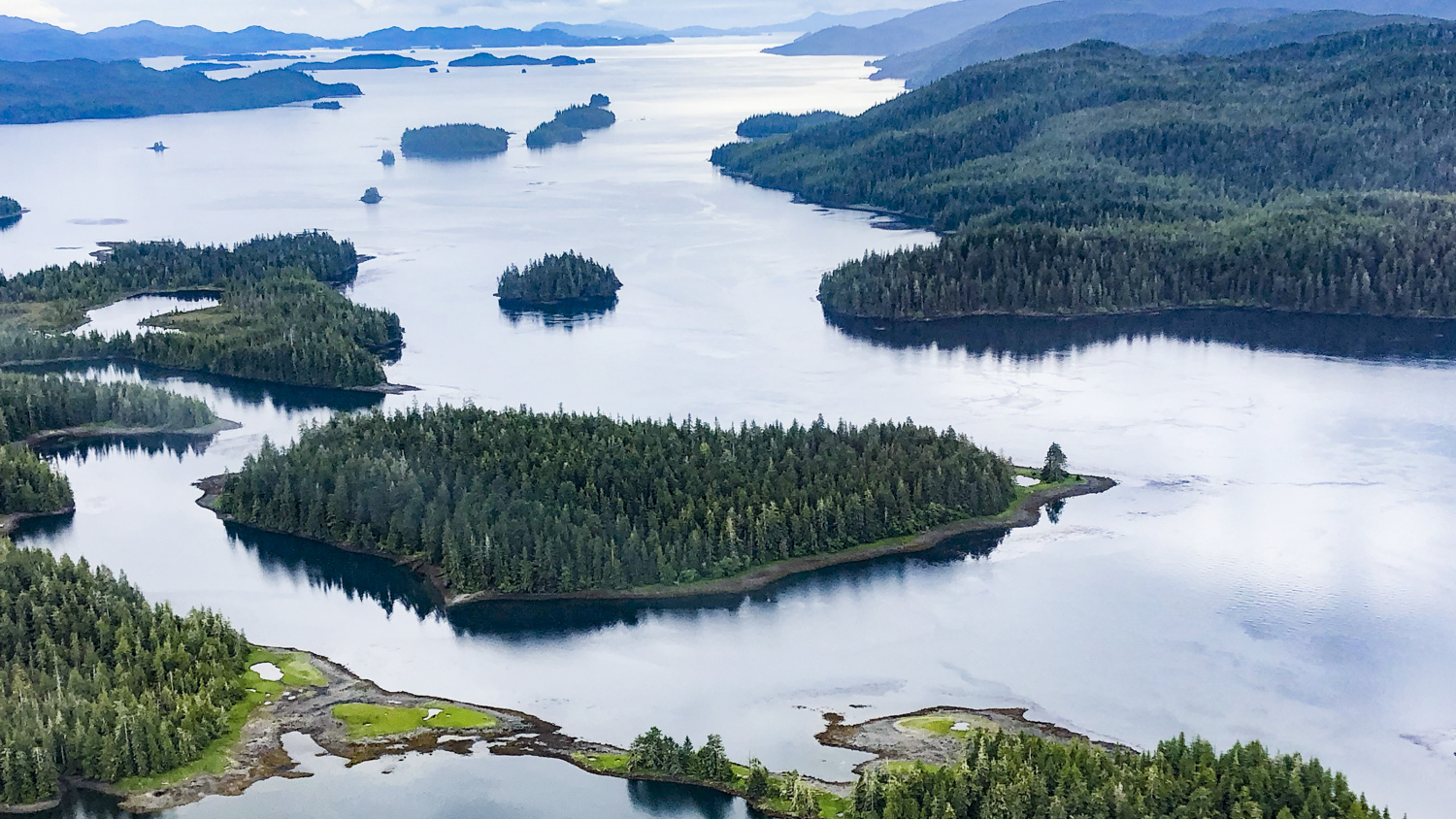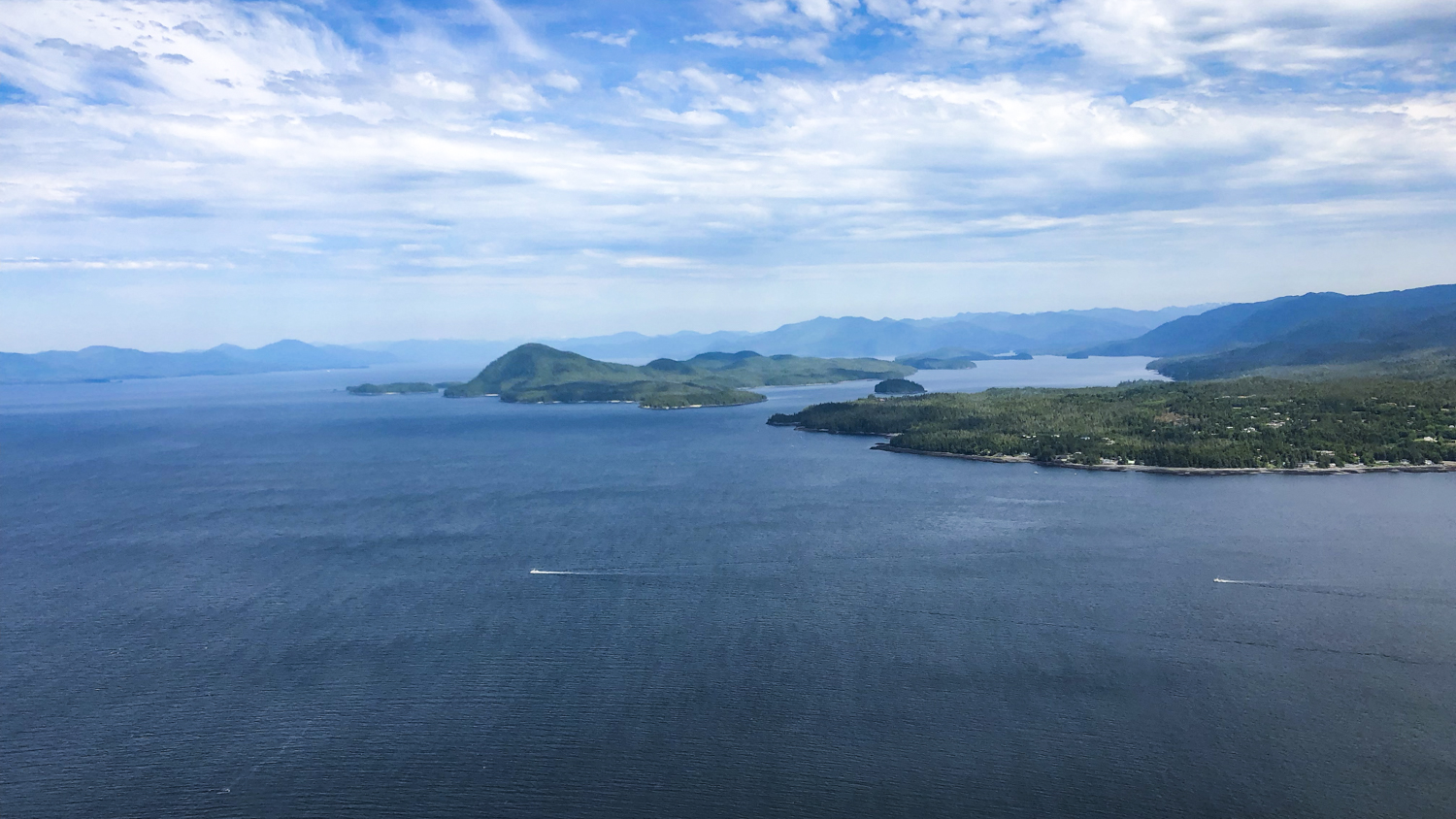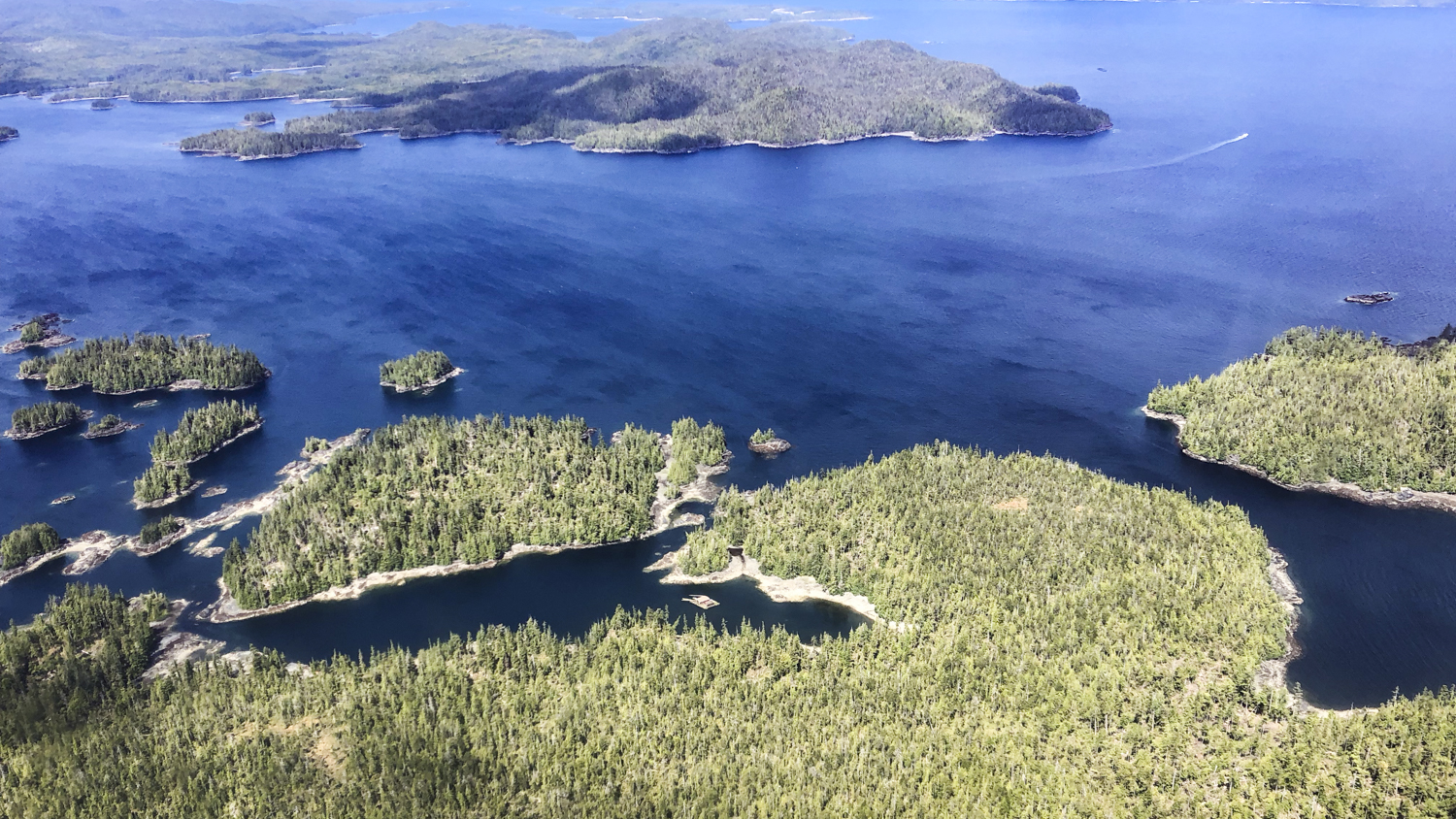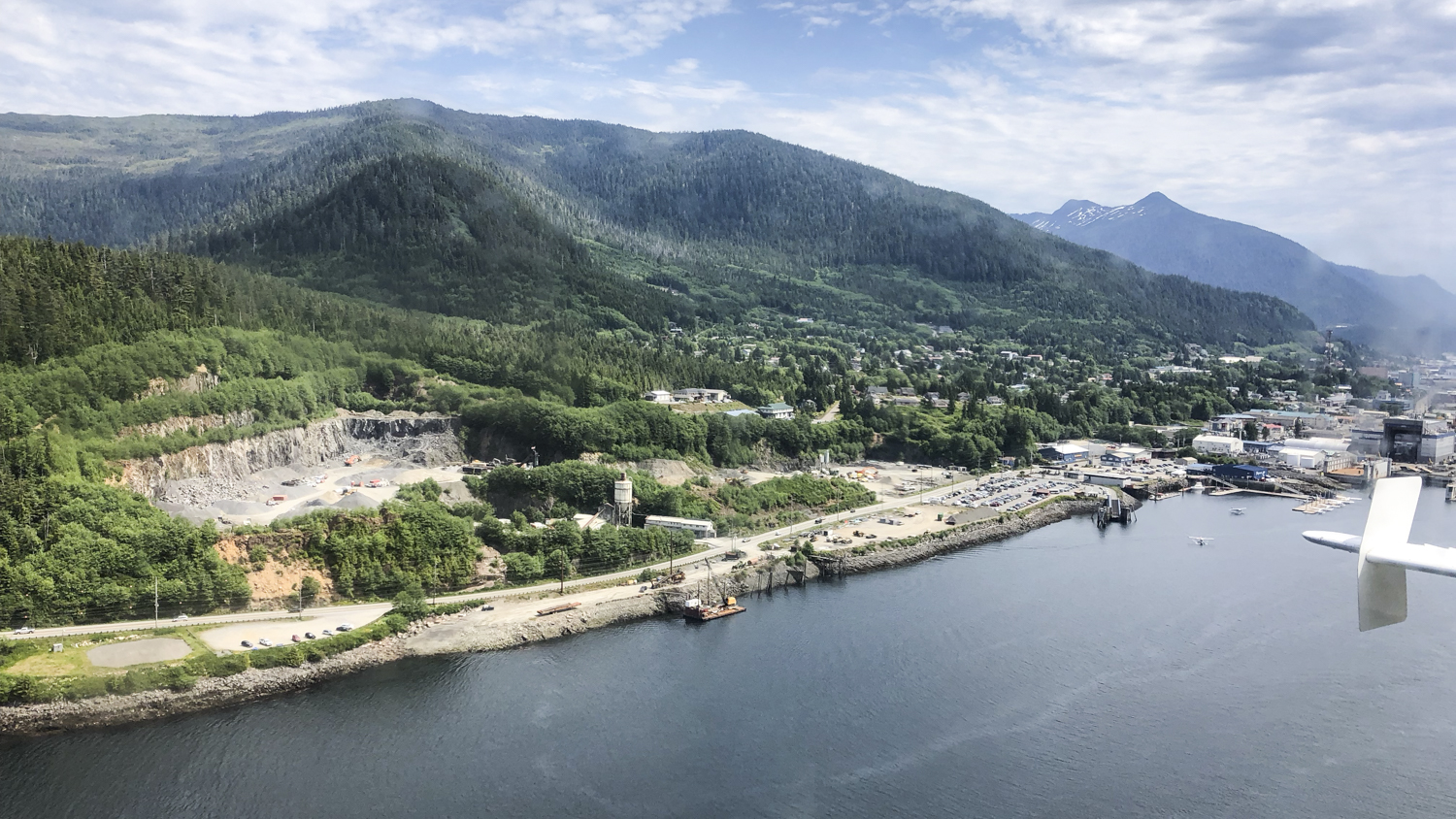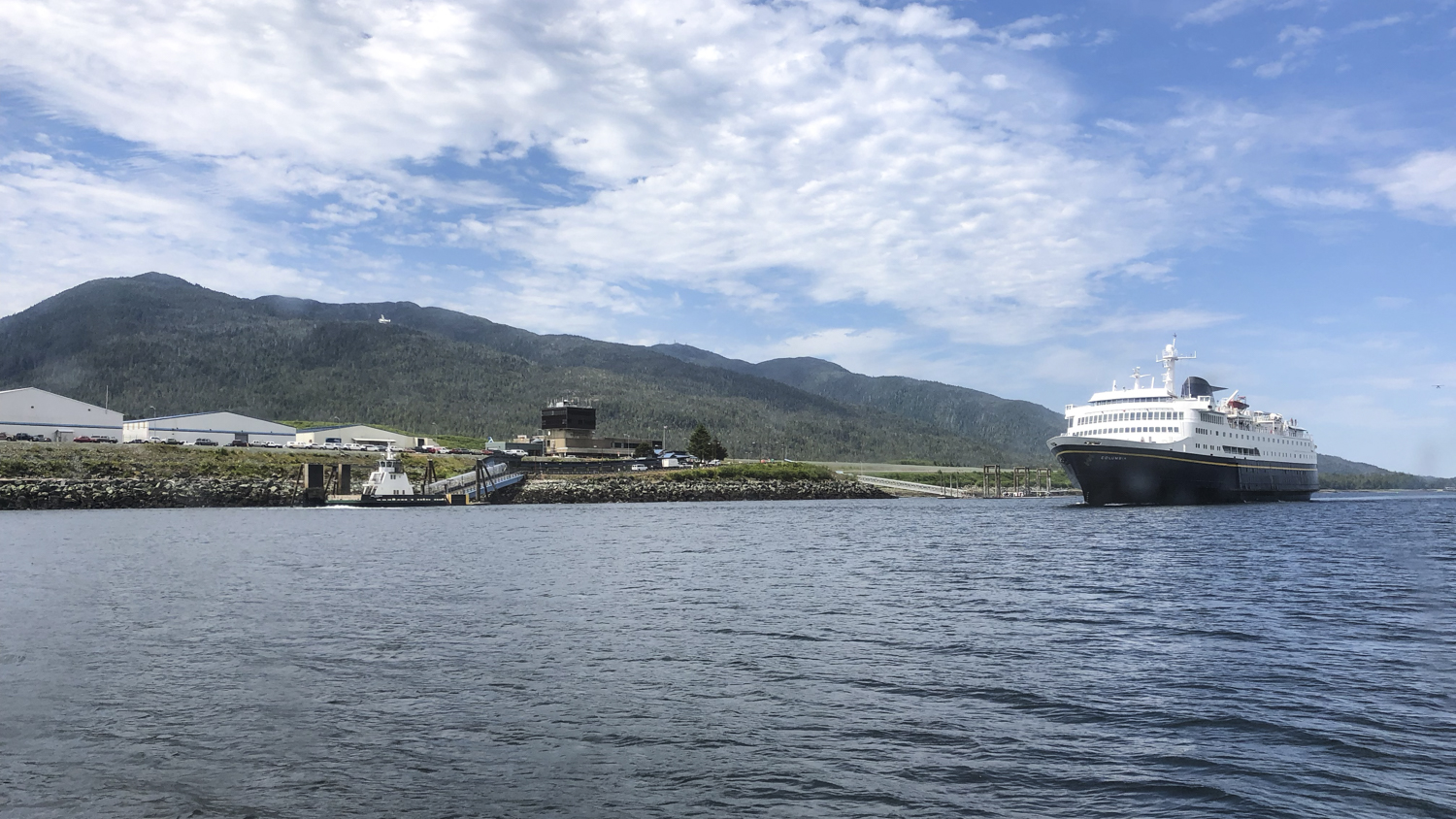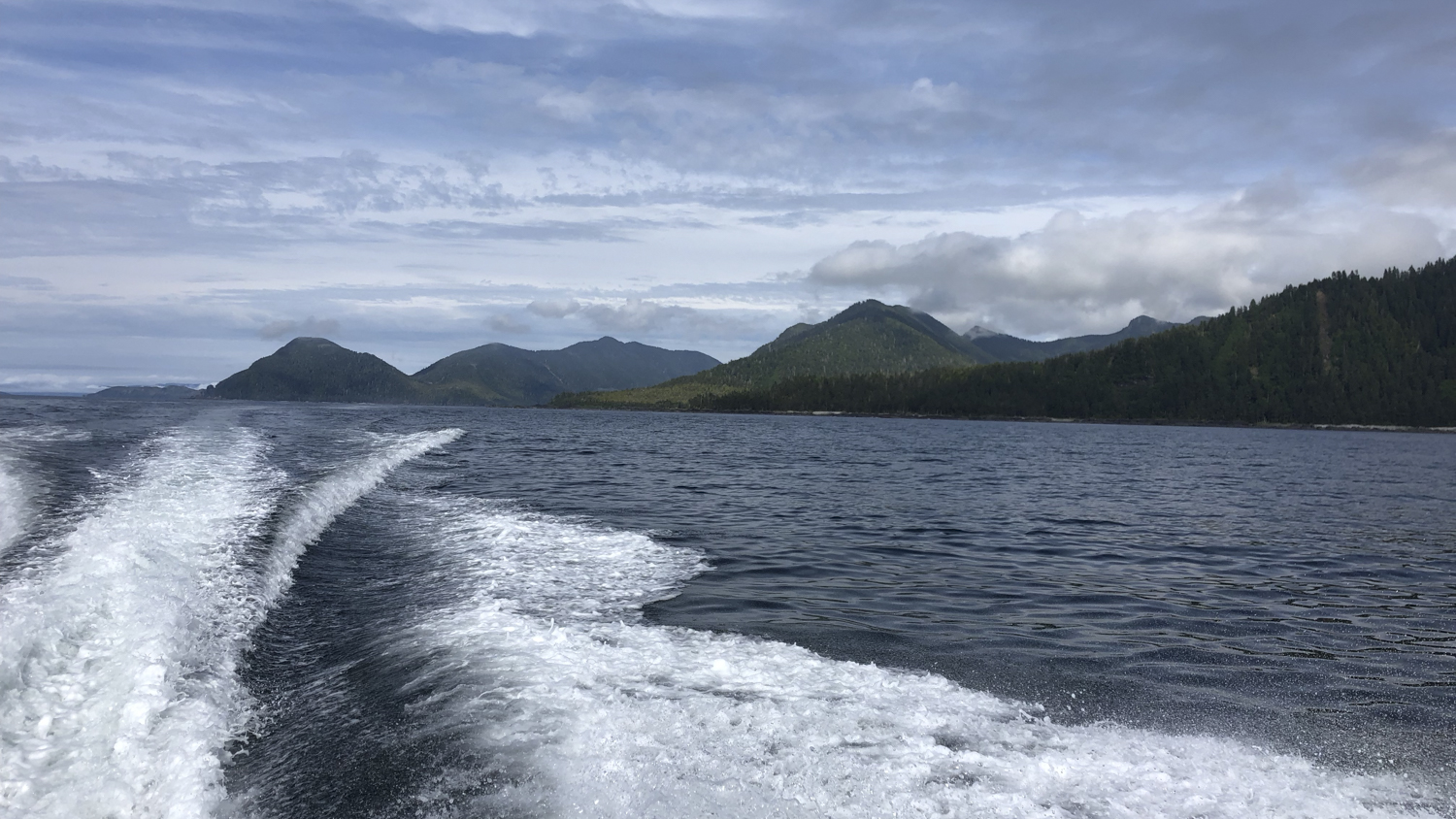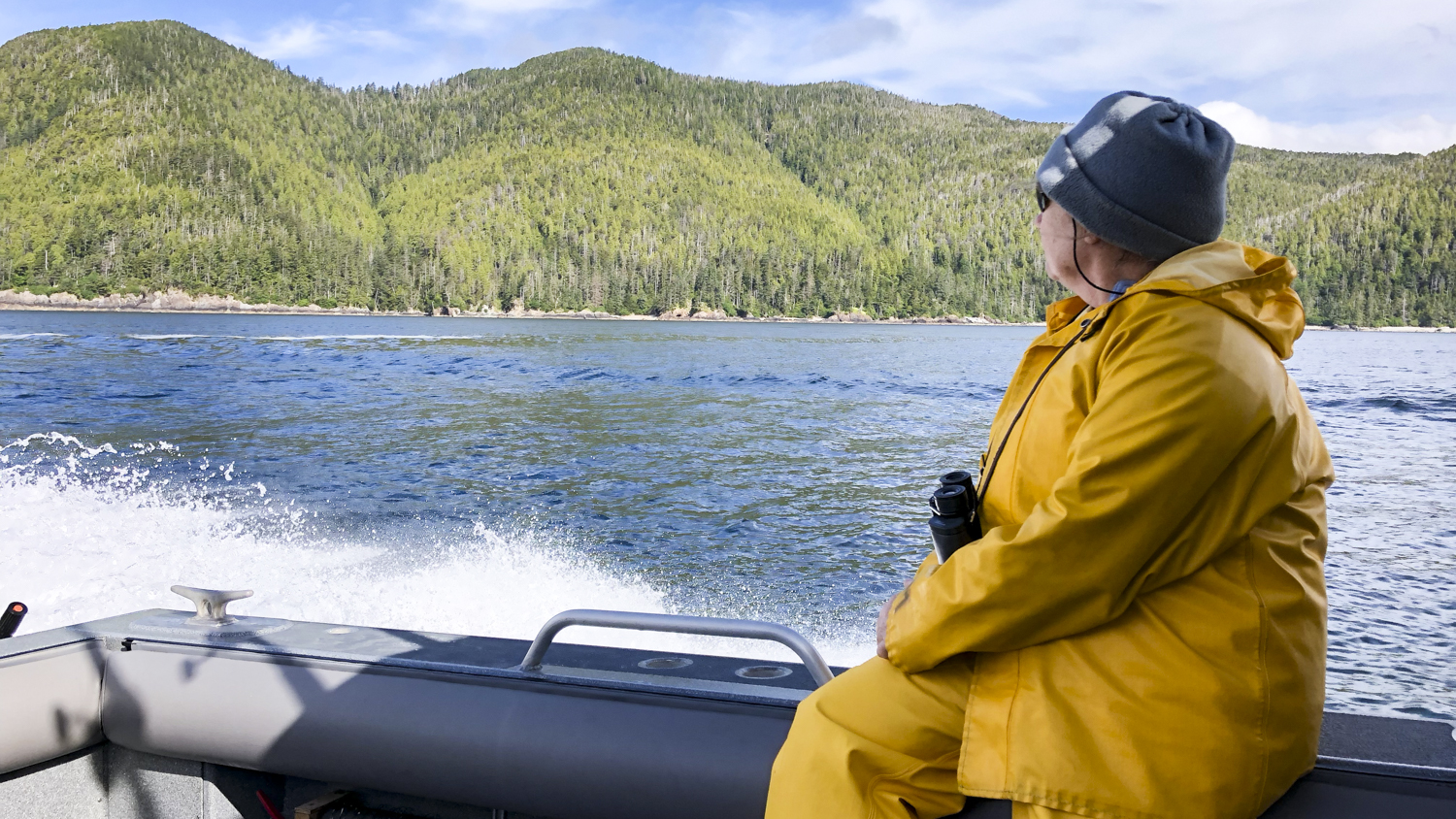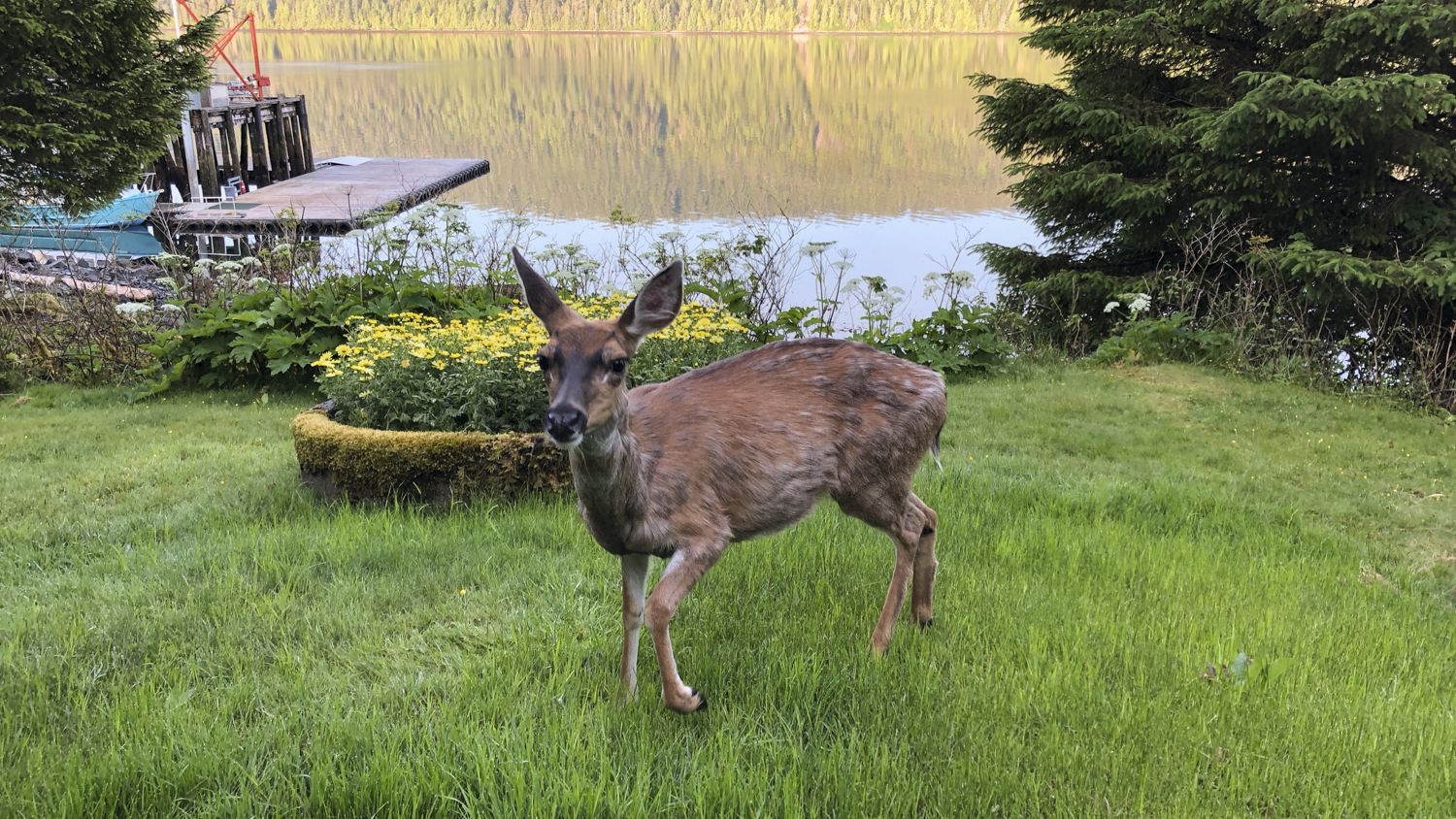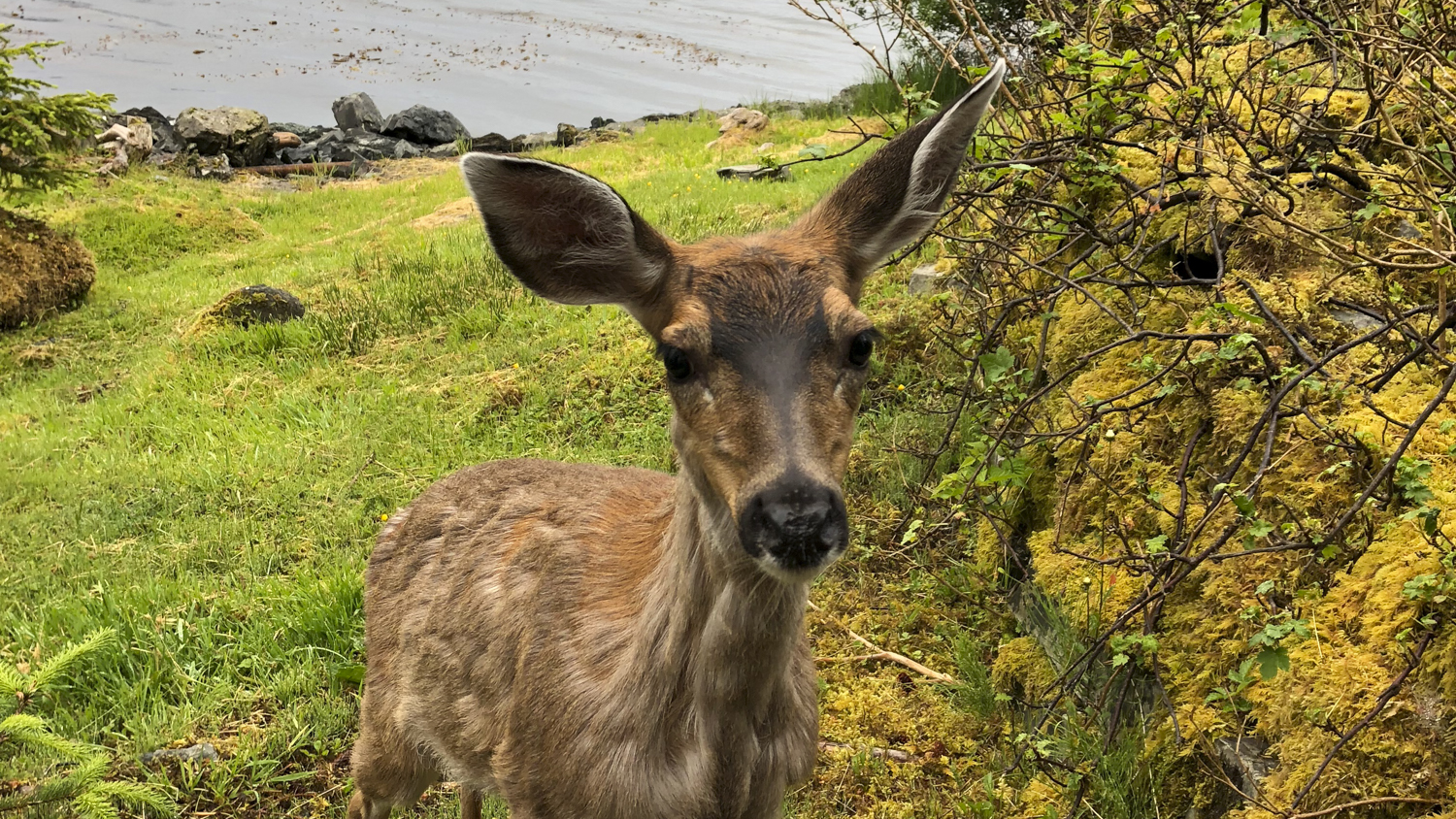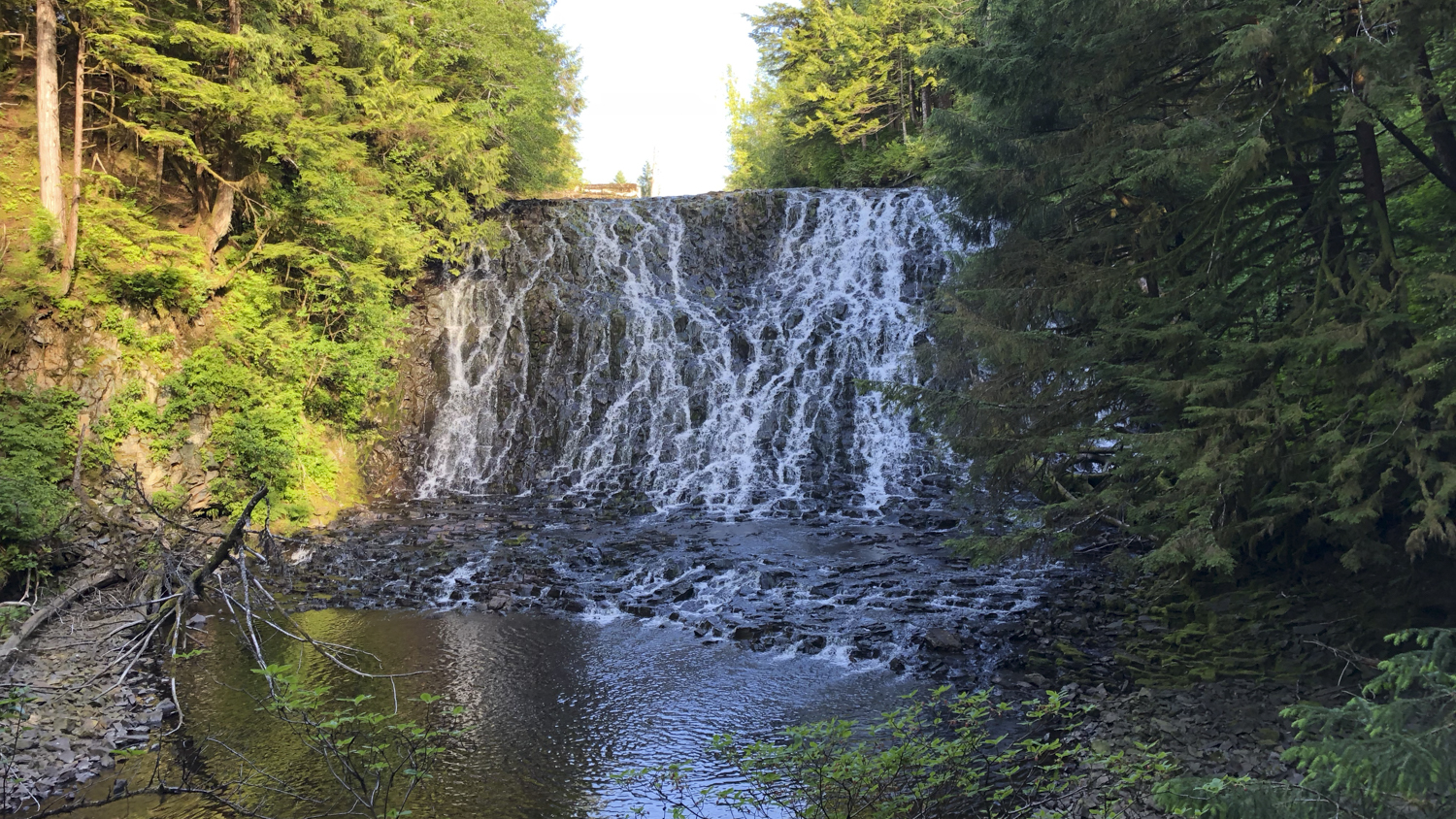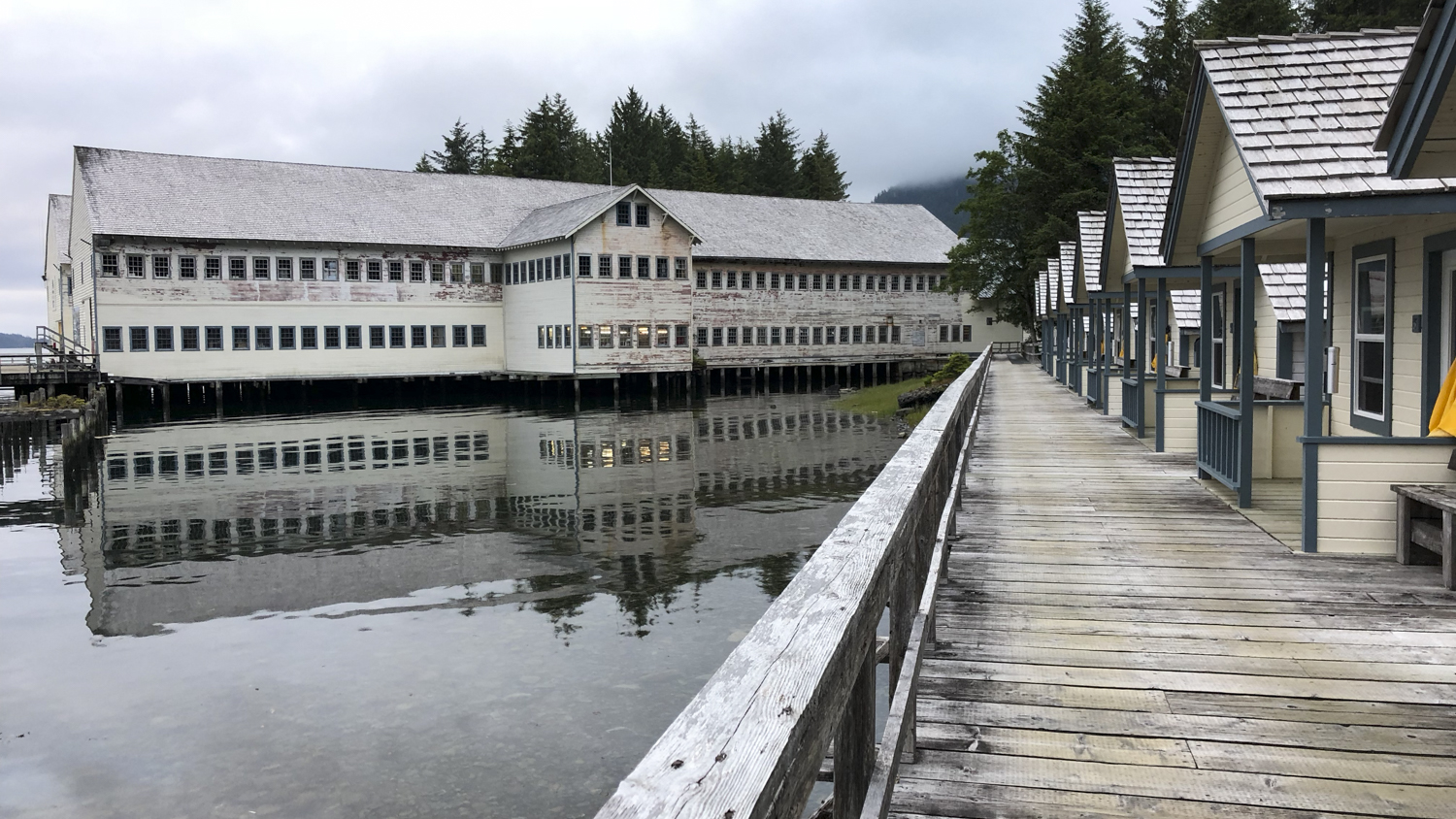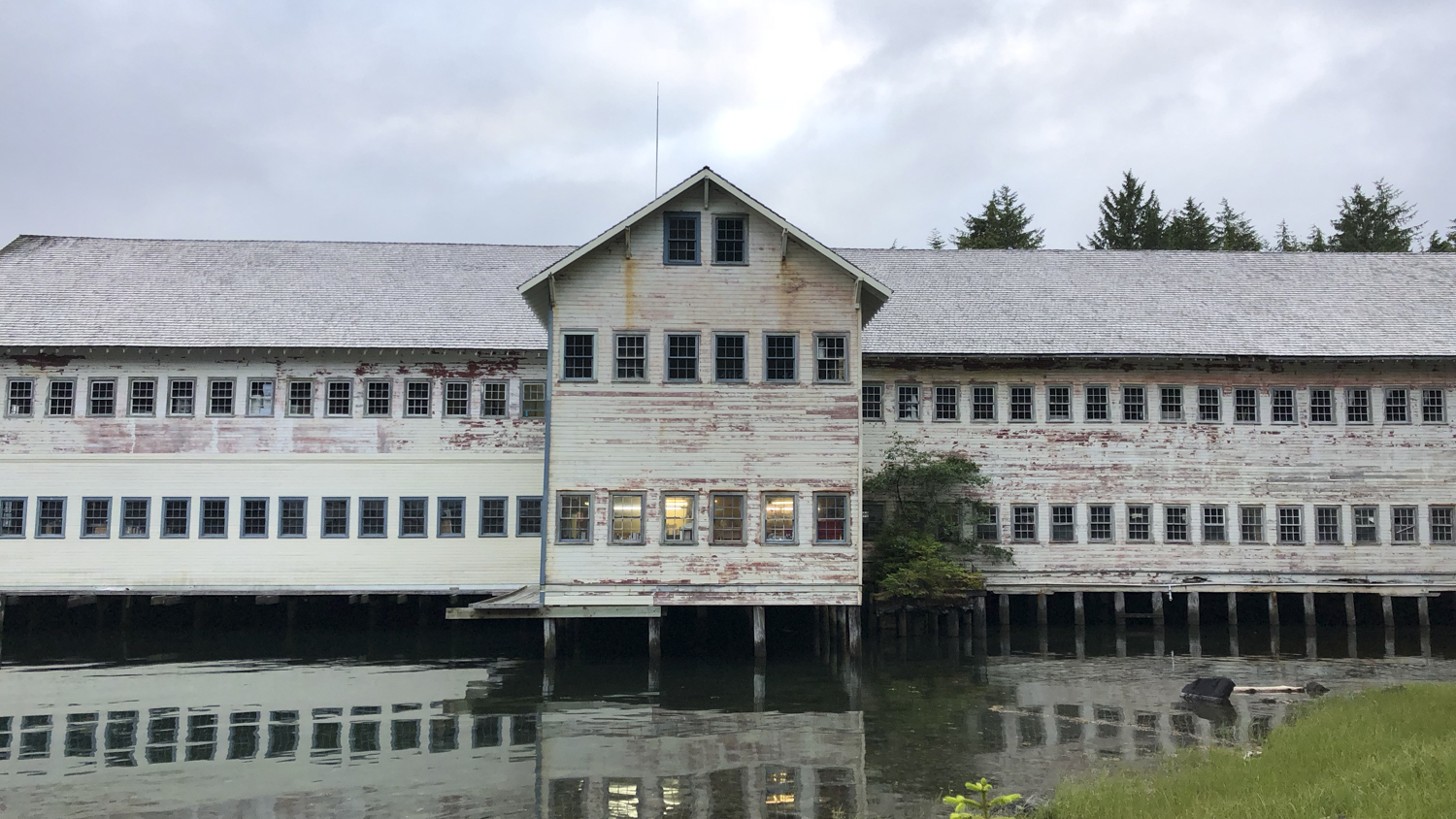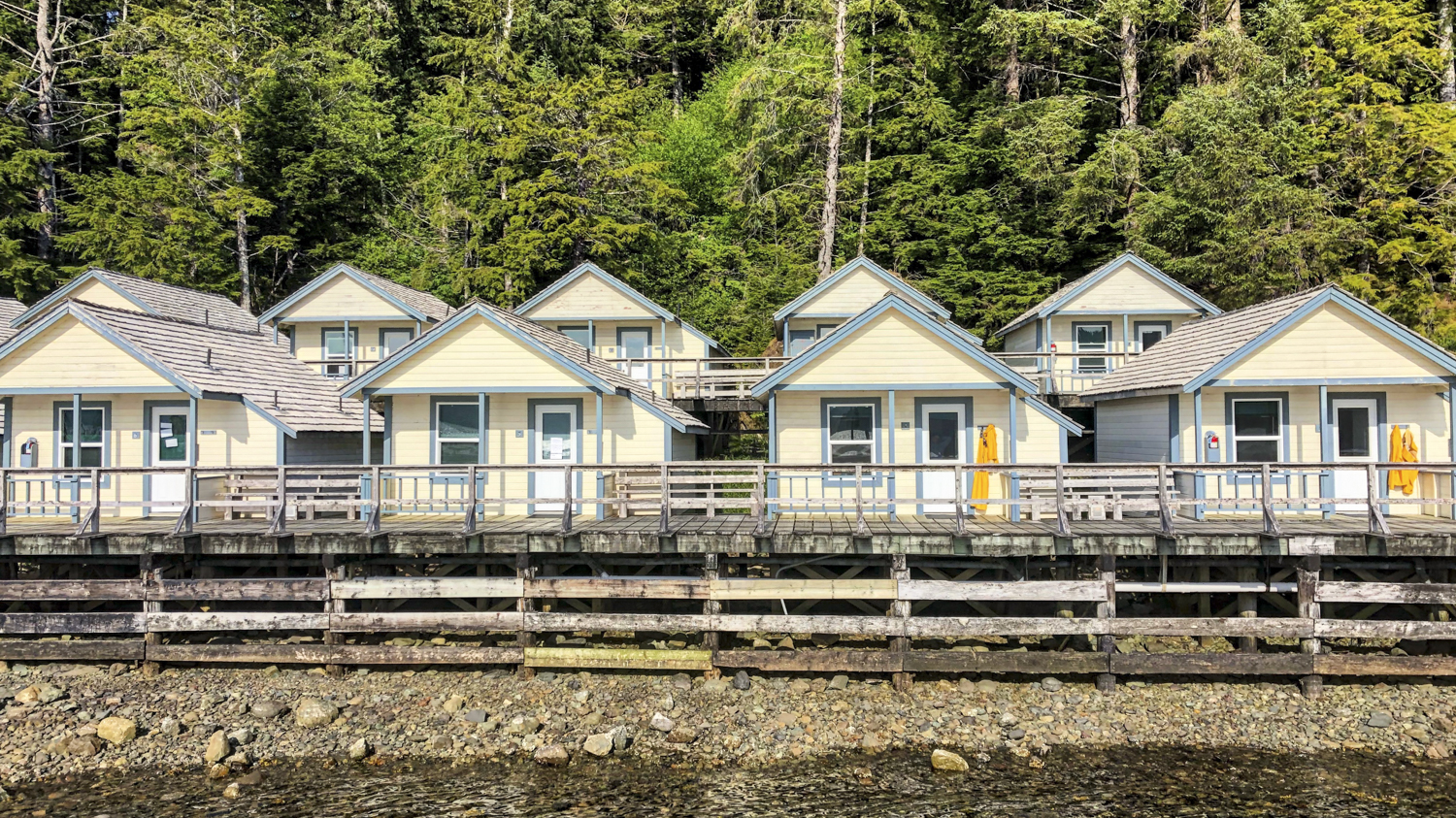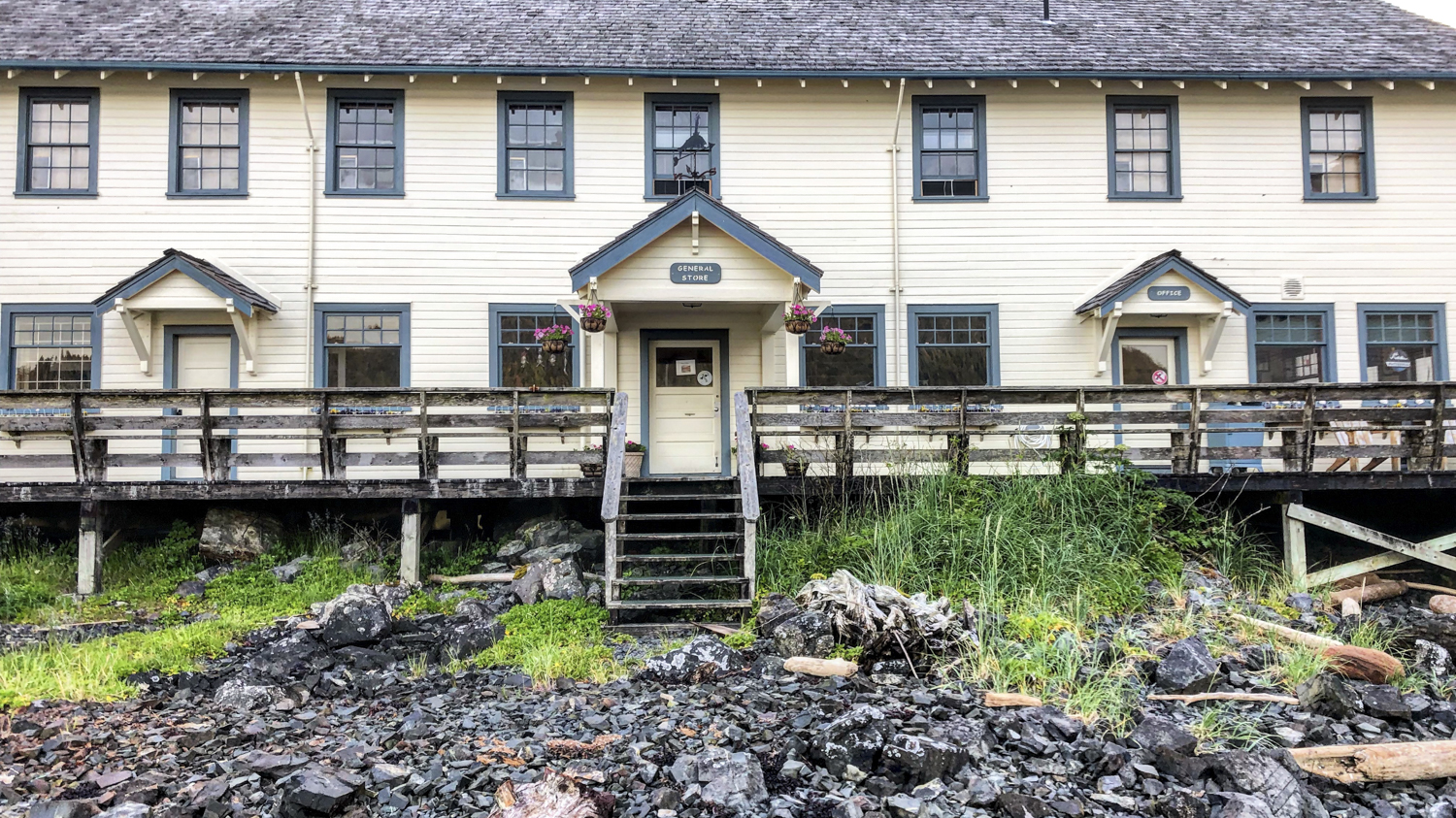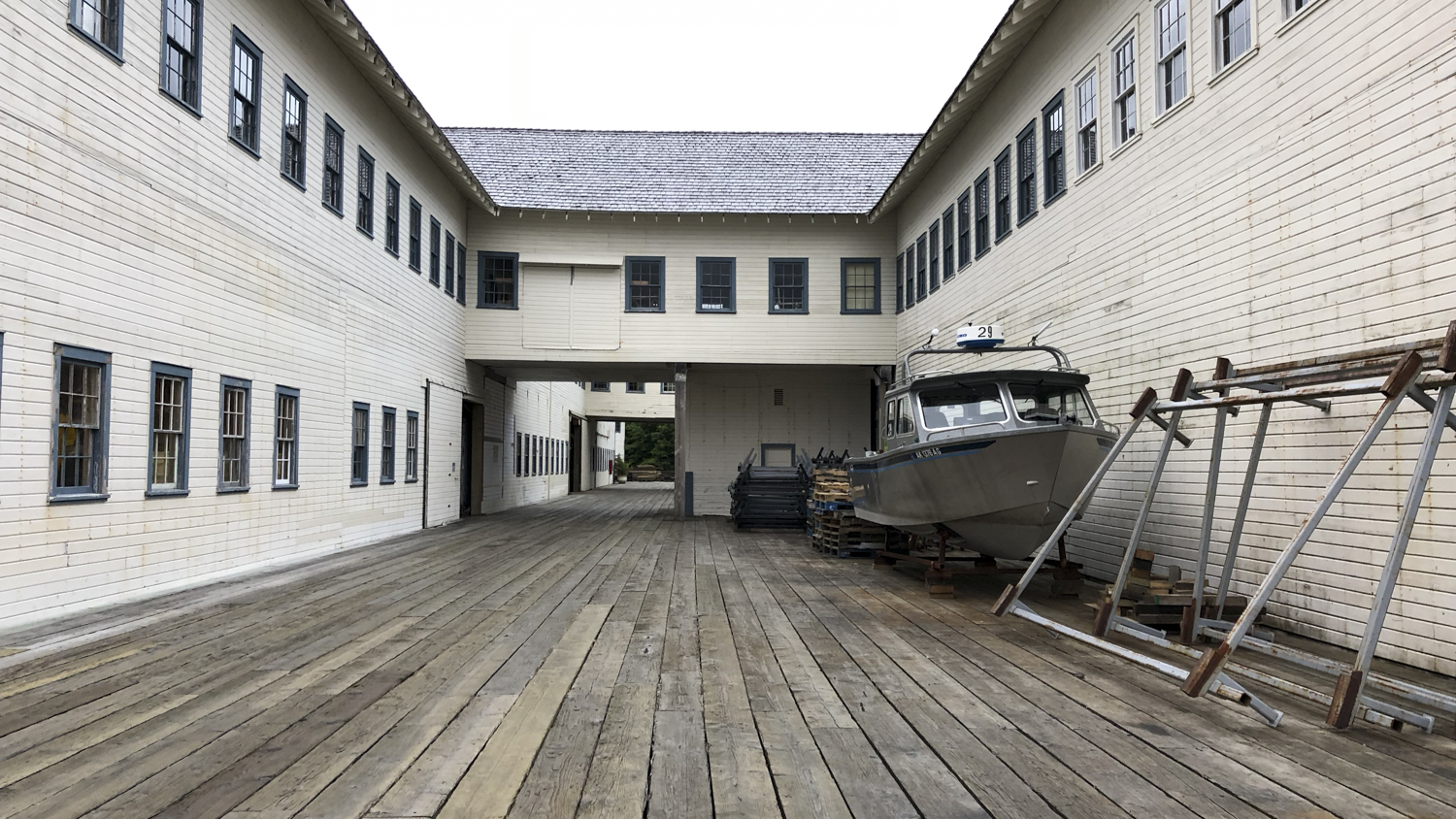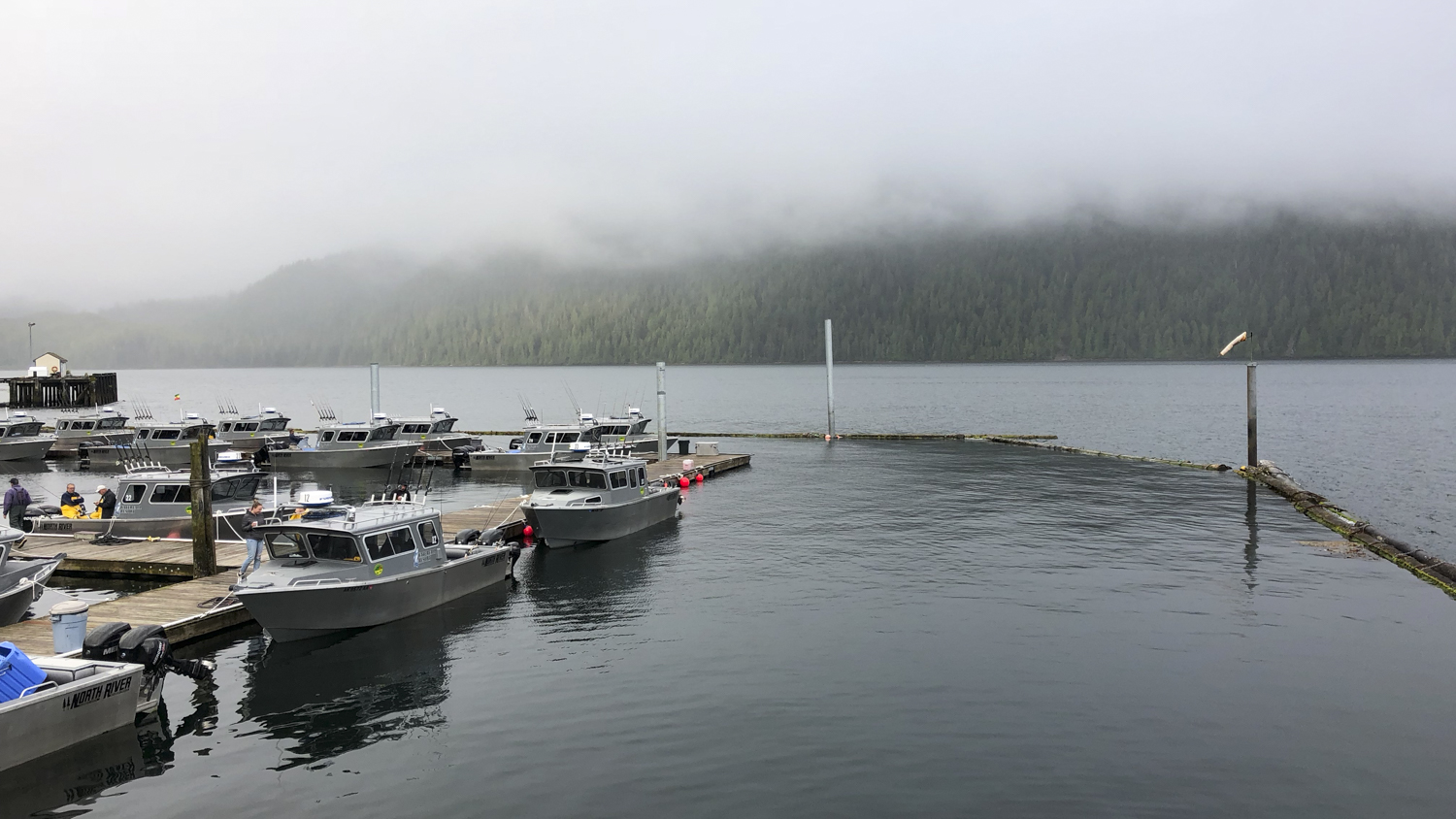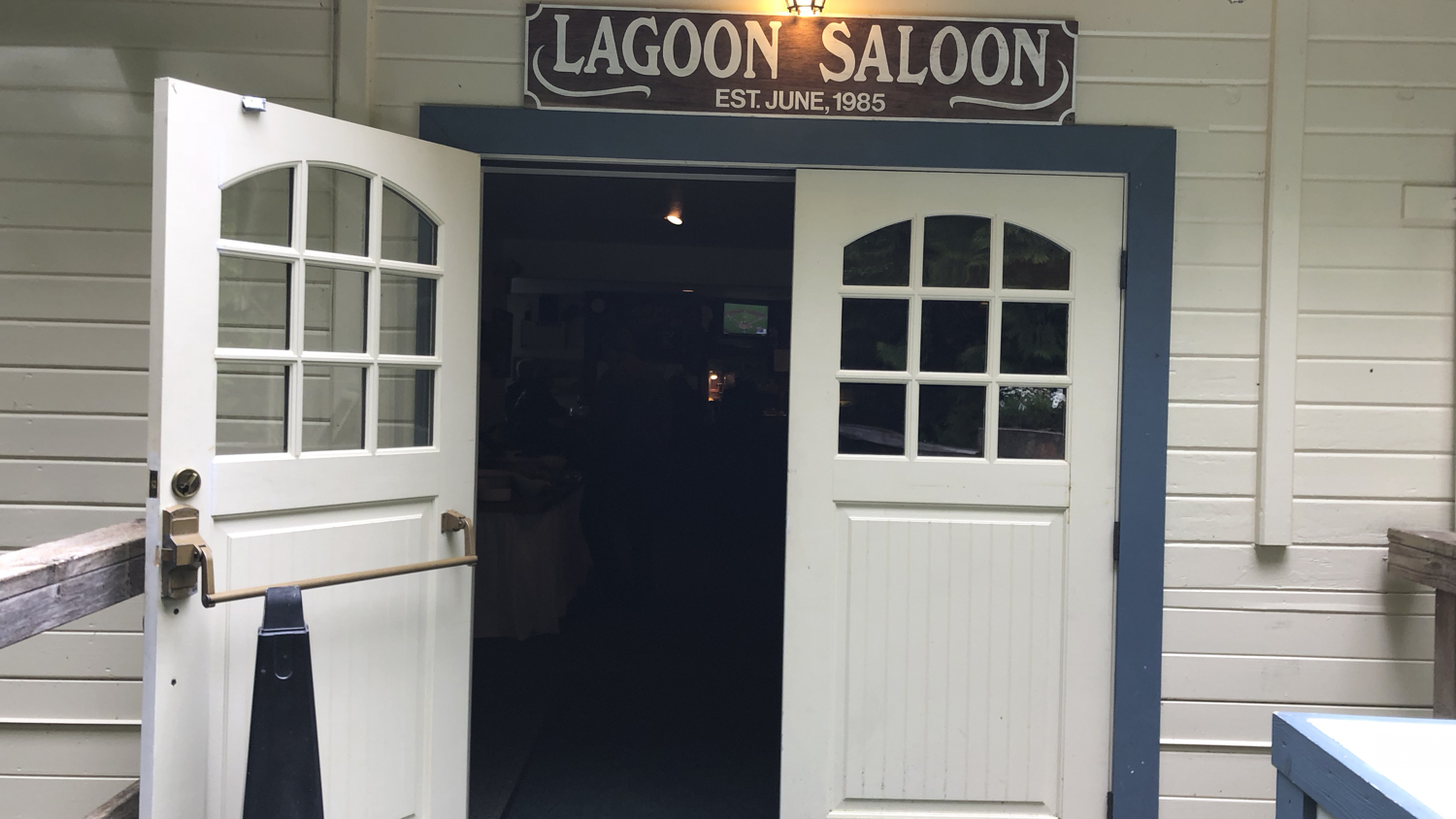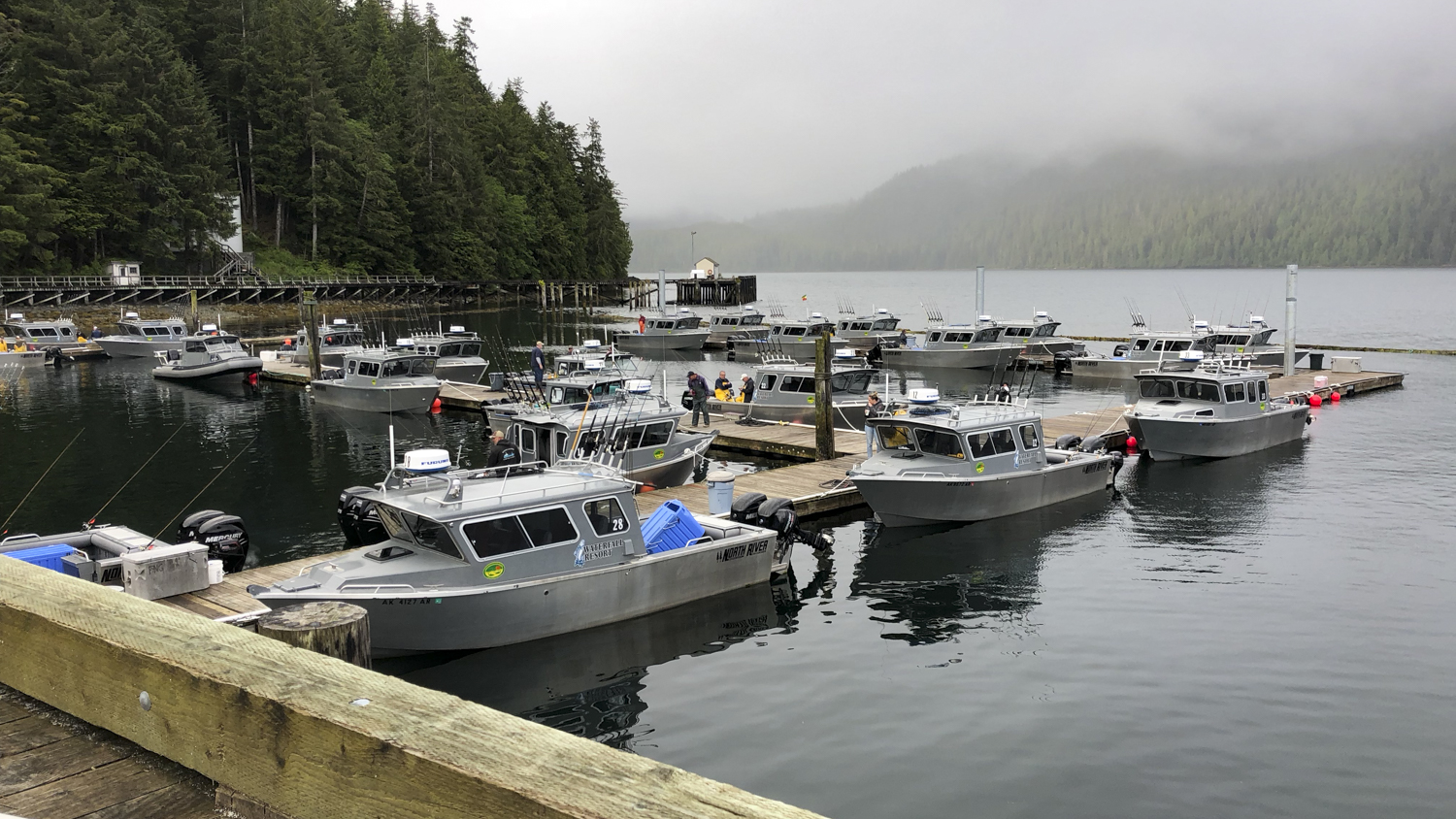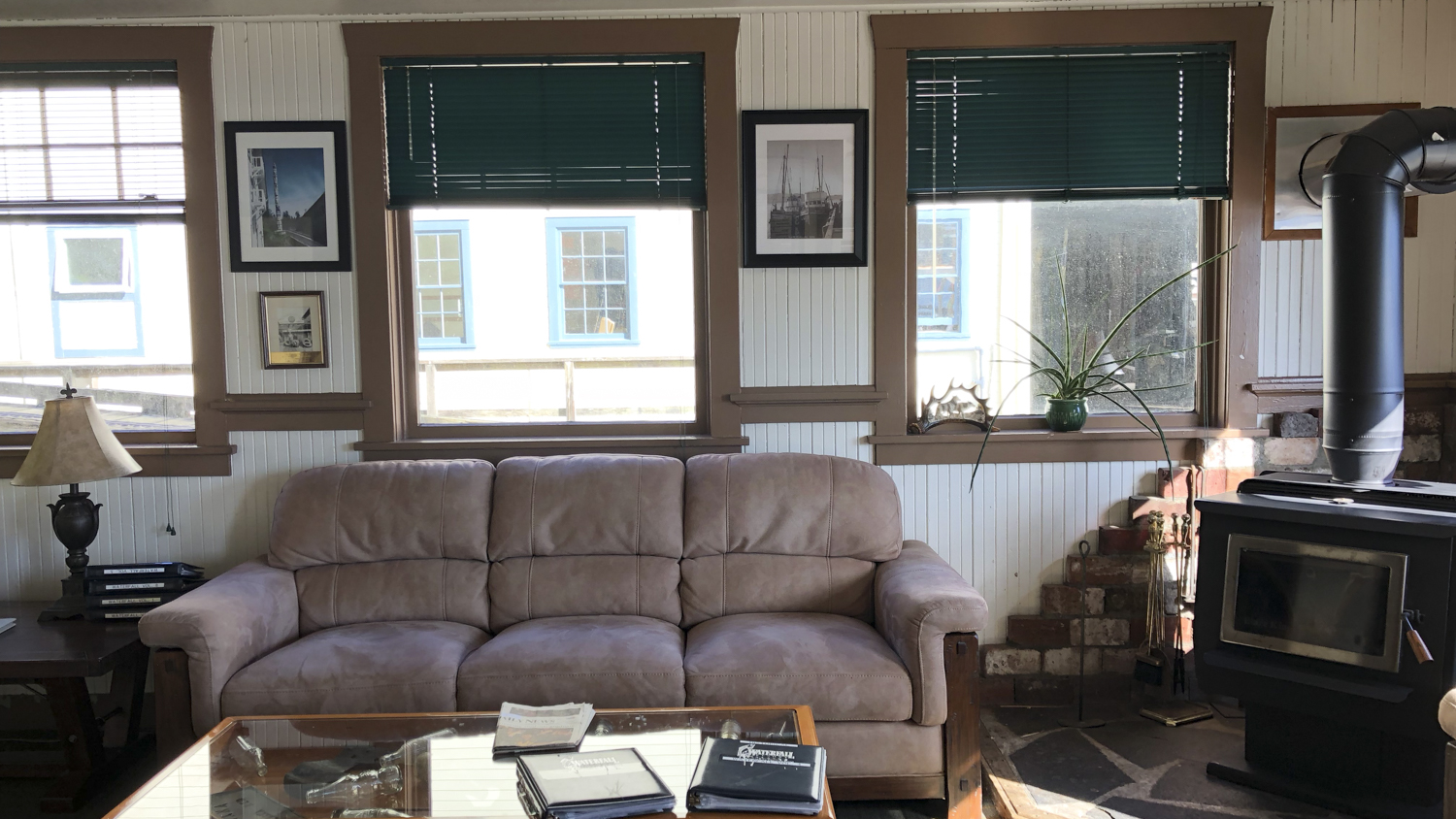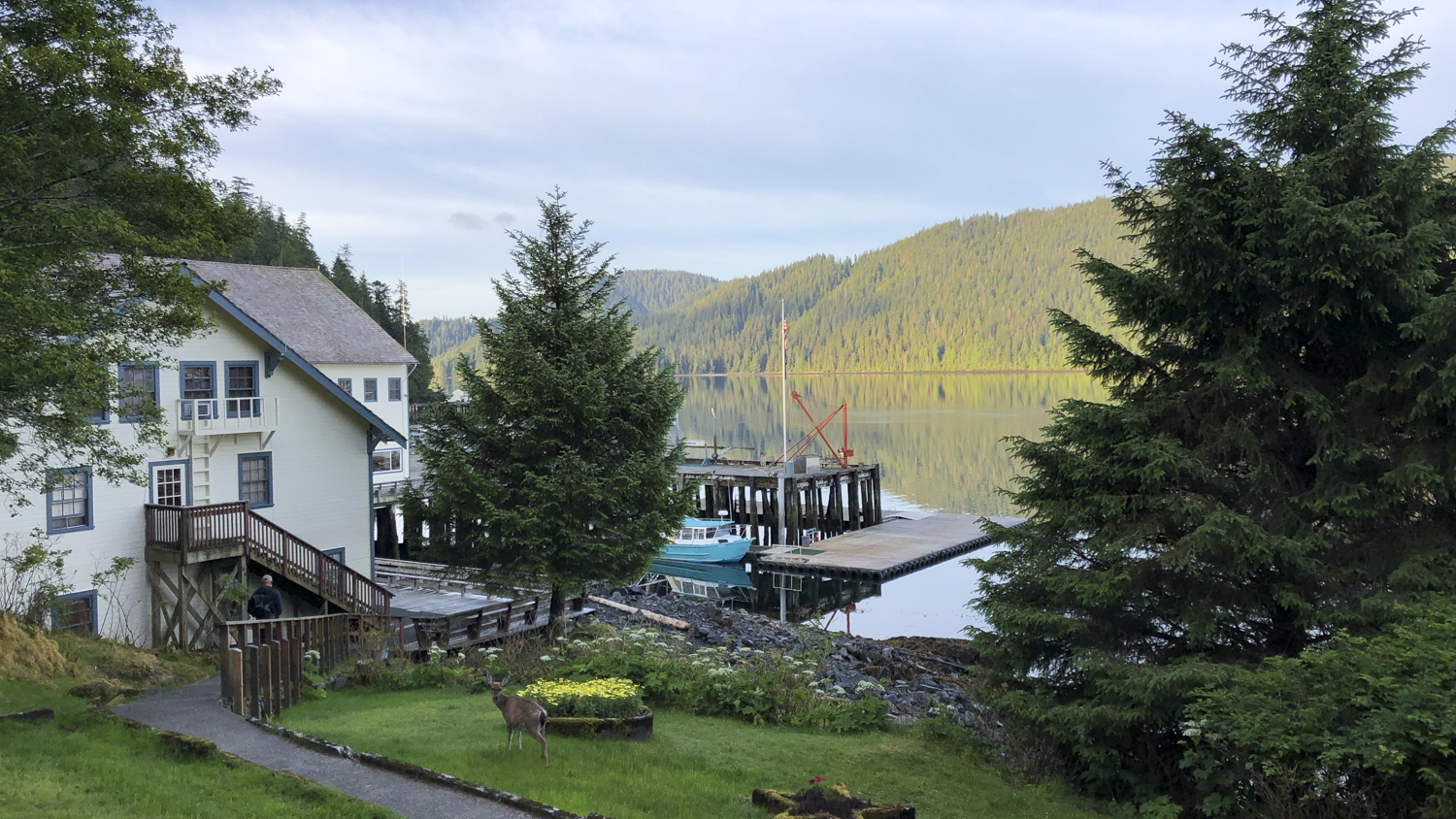When asked to conjure an image of the state of Alaska, snow-capped peaks and Arctic tundra are probably the first to come to most people’s mind. But Alaska is so much more than that — especially in and around the islands of Alaska’s far Southeast. In the state’s southernmost reaches, the geography and marine-influenced weather come together to form the world’s largest temperate rainforest, a place where clear mountain streams meet the calm inner-passage bays of the Pacific Ocean; a place where wildlife and fish abound, especially the king salmon.
It was there, on the remote Prince of Wales Island miles from the nearest town, only accessible by float plane, that I caught my first king salmon and where any sport fisherman should make a pilgrimage at least once in his life. I’m talking about Waterfall Resort Alaska.
First, a disclaimer: Waterfall Resort is not a resort in the common sense of the word. These are not five-star accommodations. There is no room service, no concierge, no in-room television or Wi-Fi, and certainly no way off the property other than by air or sea. These qualities are by no means detrimental to the experience of Waterfall Resort. In fact, the lack of traditional amenities and contact with the outside world contribute to the special quality and atmosphere that Waterfall Resort has, wherein a guest forgets about deadlines and deals to be made and focuses on friends, family, and, of course, fishing.

For anyone who thinks this sounds like the perfect escape from everyday life, there are a few things to know about the experience before taking the plunge and planning your own visit. From the logistics of travel to the actual fishing and accommodations, our recent trip to Waterfall Resort has given us first-hand knowledge of what to expect and how to prepare. Here’s what it’s like to go salmon fishing in Alaska.
Most people heading to Waterfall overnight in Ketchikan before hopping a float plane to the resort. The best place to stay in Ketchikan for an overnight is Cape Fox Lodge.
Getting There (Is Half the Fun)
Waterfall Resort is remote. We’re talking no roads in or out. To get to the fishing camp located on an arm of Bucareli Bay on the west coast of Prince of Wales Island (the fourth largest island in the U.S., located on the rugged Alexander Archipelago over 800 miles north of Seattle), you must first get to Ketchikan, Alaska. Formed as an old cannery and fishing town, Ketchikan is now a stop on the Alaska cruise circuit and the tourist gateway to Southeast Alaska.
Most people heading to Waterfall overnight in Ketchikan before hopping a float plane to the resort. The best place to stay in Ketchikan for an overnight is Cape Fox Lodge. Situated high on a hill overlooking the city and its famed Creek Street boardwalk, the Cape Fox lodge features spacious rooms, a delicious restaurant, and an old-timey funicular that you can actually ride down to the boardwalks below (that is, if it’s functioning).
From the Cape Fox Lodge, it’s a short, 10-minute drive to Taquan Air‘s dock right on the placid waters of the Tongass Pass. It’s here where you’ll turn over your luggage to be flown in a separate luggage plane and await your turn to hop into one of the tiny Vietnam War-era float planes that skim over the water and then glide into the air. You’ll be mesmerized by the forests, rivers, and islands that pass below during the course of the 45-minute scenic flight to Waterfall. Once on the dock at Waterfall Resort, you’ll be greeted and ushered to the General Store, where you’ll do a quick check-in and then head immediately to be sized and suited up in Helly Hansen bib overalls and Xtratuf boots (which are so comfortable, you’ll have no issues standing on a swaying boat for 10 hours). After donning your canary yellow fishing gear, you’re immediately assigned a boat and guide. Then it’s time to disembark for your first day of fishing. Yes, from the moment you step off the plane to the moment you get on the boat is less than an hour. Within another 45 minutes, you’re at your first fishing hole.
Unlike fly fishing or salmon fishing in rivers, coastal salmon fishing has a different method and strategy.
Fishing
Mooching
“Drop ’em if you got ’em,” our Coast Guard-certified fishing guide and captain, Evan, would say over and over again during the course of the three days we spent casting for kings at Waterfall Resort. Evan, who started out cutting fish at the resort, worked his way through the ranks to become one of the top guides at Waterfall. We dutifully complied and watched as our bait and sinker fell spinning into the depths.
Unlike fly fishing or salmon fishing in rivers, coastal salmon fishing has a different method and strategy. Initially apprehensive of our abilities, since none of us had fished for salmon in the ocean before, we were relieved to find that even children can fish for king salmon with this method. Called “mooching,” the process is possibly the simplest form of fishing a person can do.

Using Shimano reel counters on eight-foot single poles, weights, and whole herring as bait, we released our lines with our thumbs on the spool and felt for the weight to reach bottom. The method is tricky at first because the boat is drifting while the bate is dropping — a line might run out twice as far as the depth of the water column — so it wasn’t uncommon for us to have up to 200 feet of line out at any time. Once our bait struck bottom, we reeled up. Sometimes, if the water was fairly shallow, we’d reel all the way to the surface; at other times, we’d reel up “20 cranks” or halfway, since the fish we were looking to catch lived their watery lives near the sea bottom.
We’d repeat this process in multiple fishing “holes” throughout the trip, all variously named by the guides. Our favorite was “Chicken Hole,” the last calm spot before reaching open ocean and “the swirly” waters where the wind and waves of the Pacific collide with the more gentle seas of sheltered bays

The Fish
Along with king salmon (for which we secured a special fishing stamp, along with an Alaska out-of-state fishing license), we also fished and caught lingcod, rockfish, and halibut. All make for excellent eating and the beauty of Waterfall Resort is that every boat pools their entire catch for the trip and splits it up evenly so, everyone goes home with plenty of fish of all different kinds.
Hooking a halibut became boring by the second day, and while locking a lingcod or rockfish was more exciting, we were all still waiting to snag a salmon. With a slow start to the season, Evan was trying his best to find us a place teeming with baitfish so we’d have a better chance at finding the kings. Finally, after half a day of pulling up halibut after giant halibut, we hooked our first king. After much reeling, grunting, heaving, pulling, sweating, and finally netting, our first king salmon was on the floor of the boat and our excitement could not be contained. Our whoops and hollers echoed over the water and bounced back at us from the ancient cliffs that formed the bay off Noyes Island.
The (Welcome) Distractions
When not catching fish, we mostly listened to satellite radio and gazed at the scenery. Gorgeous by anyone’s judgment, Southeast Alaska is a paradise for bear, wolf, deer, elk, bald eagles, sea otters, sea lions, and every other critter and creature you could think of living in a Pacific Northwestern forest. Because Southeast Alaska is very much in the Pacific Northwest. Fur trees and ferns cover the hills and mountains, reaching down to rocky beaches and jagged shorelines. Here we saw dozens of eagles attacking a bait ball in the middle of a bay, sea otters lazily lolling on the waves, orcas (which are bad for salmon fishing), and whales that greeted us by thrusting their bodies entirely out of the water and smashing down onto the surface with the force of a thunderclap. It was more often than not during these majestic moments when we were distracted by the natural beauty of the place that one of us would get a bite. And then it was back to what we came for: the fish.
But, after eight to 10 hours on the water, we welcomed the boat ride home and the chance to slip out of our gear, take some of the world’s best-feeling showers, and relax before heading to the dining hall for the community dinner.

Accommodations
Waterfall Resort, as mentioned, is no Club Med. There are a few room options: quaint fisherman cabins right on the dock that can accommodate four, townhouse-like spaces set back from the rest of the property, and more traditional hotel rooms located above the Lounge and General Store, which carries souvenirs, beer, snacks, sodas, and sundries. We stayed in the cabins on the dock, affording us beautiful views of the water and sunsets (which happened at nearly 11 p.m.) and a short scenic walk to the dining hall where we consumed some of the best food you’ll ever have while being an entire airplane ride away from civilization.
Dishes like king crab legs, Dungeness crab, venison, steak, tenderloin, and elk, accompanied with vegetables, mashed potatoes, salads, soups, and bread, and followed by ice cream, crumbles, and pies for dessert are proof that Waterfall Resort knows fisherman get hungry after a day on the water. Local wines and beer are also included in the meals if you’re up for finer tipple. And speaking of tipple, Waterfall Resort does indeed have a bar. Where, after tying on a few too many nightcaps and swapping fish stories, you can ring up a golf cart-driving designated driver to return you to your room — the only taxi service of any kind that you’ll find on the island.
When not out on the water, there was plenty of time to relax at Waterfall, given the long days of summer in the far North. A couple-mile trail stretches from the resort to its namesake waterfall nestled in a forest of ferns and moss. During coho salmon season, bears flock to the waterfall to gorge themselves on the easy catch. Other guests prefer to bird watch or simply sit on the dock or their cabin porches, reading and relaxing. Still others tried their hand at a very different sport: golf. Waterfall Resort does, indeed, have a single golf hole where you can take aim from the edge of a freshwater lagoon toward a green a few hundred yards away. A few beers from the bar beforehand might help you with your swing.
After every fishing day, fish cutters, working in the historic buildings of the old cannery that Waterfall Resort used to be, expertly scale, trim, and filet your fish, then vacuum seal and flash freeze them for transportation home.
Getting Your Fish Home
On the last day of your trip to Waterfall, you’ll go out for a morning of fishing before returning back to the resort to quickly shower, dress, check out, and receive your assignment for your floatplane back to Ketchikan. So what about your fish? Waterfall Resort has that taken care of. After every fishing day, fish cutters, working in the historic buildings of the old cannery that Waterfall Resort used to be, expertly scale, trim, and filet your fish and then vacuum seal and flash freeze them for transportation home. A checked wetlock box guaranteed to keep your fish frozen for 24 hours is taken as checked luggage at the onsite Alaska Airlines office (a real perk!), which you’ll see again at your final destination.
Our fish arrived perfectly frozen and in good shape, without any damage or thawing. With the over 25 pounds of fish we brought home, including at least five pounds of king salmon, we’ll be eating like kings for the rest of the year. Each time we do, we’ll think back to an experience we’ll never forget.
For more information on Waterfall Resort or to book your own trip, visit the resort online.
